Le Mans, September 1968. Not June? Not this year.
This year, the 24-hour race is postponed after summer-long civil unrest in the staunchly patriarchal France of Charles de Gaulle, although that’s another story. As far as we’re concerned, the story is at Le Mans, in September. It’s the final leg of the World Sportscar Championship and the decider between Porsche and Ford. Who will prevail? The 4.9-litre GT40s are narrow favourites after wins at Spa and Watkins Glen but one unbelievably juicy and almost incomprehensible sub-plot brought about by the calendar change is that Ford’s new motorsport chief is at the wheel of the #33 works Porsche 908.
Fast-forward 20 years. In another life, the same man is tasked with leading Mercedes’ return to factory motorsport operations after 33 years of self-imposed exile. It’s a shrewd bit of HR, and not only because Mercedes-Benz goes on to secure the 1989 World Sports-Prototype Championship, in the process taking an emphatic one-two at Le Mans with the handsome Sauber-Mercedes C9. Arguably the more momentous development that year is our man’s establishing of an all-new junior driver programme for the Silver Arrows. Its inaugural trio of signings includes the fresh-faced son of German bricklayer and devoted father Rolf Schumacher.

Yet here’s the remarkable thing about Jochen Neerpasch. The exquisite intrigue of 1968, the rehabilitation of Mercedes into motorsport more than three decades after the Le Mans disaster, giving arguably the greatest Formula 1 driver of all time his first big break: any one of them would be legacy-defining events for most people, but that’s not quite the case for this 83-year-old.
Neerpasch is best known, and best known by far, for founding BMW Motorsport GmbH after leaving Ford in 1972. It means that 2022 marks 50 years of arguably the greatest entity the car industry ever gave to petrolheads of ordinary means. That roaring, oversteering, vivacious but otherwise usable, incognito and mostly affordable entity known as the M car.
So happy birthday, M, and what better way to celebrate than to join the dots between street and track with a race weekend, a road trip and a rendezvous at division HQ in the Munich suburb of Garching?
How it all began
![]()
Let’s go back to the start. “Totally unexpected” is how Neerpasch describes it. From the plush confines of a modern BMW M Motorsport truck in the Nürburgring paddock, he’s turning the clock back more than half a century to a time when the marque’s competitions operation consisted of just five rally mechanics and an M5 was an anti-tank gun. Back when he was still boss at Ford Motorsport, Cologne.
“I got a call late in 1971, at home in the evening, and Bob Lutz said he wanted to reorganise BMW’s motorsport activities,” he recalls. At that time, Lutz hadn’t even hit 40 but was already vice-president of sales at BMW, having himself been pinched from Ford. Neither was he hanging around, remaining with BMW only until 1975 but immediately lobbying CEO Eberhard von Kuenheim to form an in-house racing division. Why? “A company is like a human being,” Lutz would pronounce when BMW Motorsport GmbH burst into life on 24 May 1972. “As long as it goes in for sports, it is fit, well trained, full of enthusiasm and performance.”
Lutz, who went on to become an industry giant in the US, knew the time was right. BMW nearly went bankrupt in 1959 but the Neue Klasse cars introduced in the 1960s had caused revenues to quintuple, so the coffers were healthy. More directly, the company’s E9 coupé had in recent years been transformed for Group 2 racing duties in the wildly exciting European Touring Car Championship, but only with privateer teams that could never make this big, elegant tourer quite light enough. With present and future F1 world champions on the grid and machines that were tantalisingly related to showroom models, the series was popular and the benefit of BMW having a works set-up was clear. Lutz’s problem was that he wanted Neerpasch at the helm, and Ford man Neerpasch’s problem was that the Capri RS he had developed was dominating the ETCC. Why on earth forsake it all?
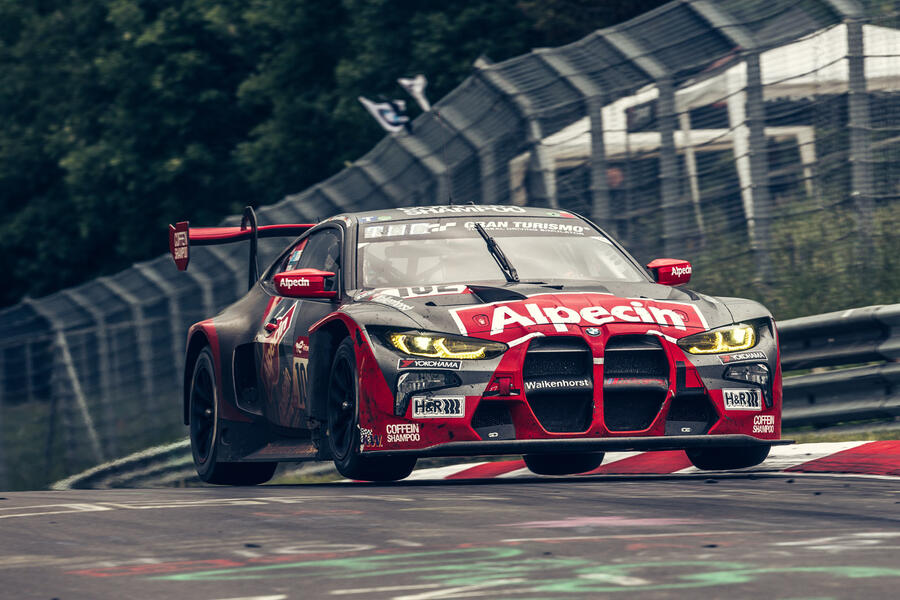
“This could be a chance, let’s say, to have a project for the future,” says Neerpasch. From today’s vantage point, it seems ludicrous that M’s existence could ever have been in doubt, but the truth is that Neerpasch wouldn’t sign up until he had a cast-iron guarantee from Lutz that 1000 lightweight ‘CSL’ versions of the E9 would be made to homologate something that could vanquish the Capris. Things were delicate. Making those CSLs wasn’t the problem. Karmann would be commissioned and was capable. But selling them? Quite risky, says Neerpasch. Without success on circuit, these hugely expensive models – in 1972, the CSL cost two-thirds of what Ferrari was asking for the already eye-wateringly pricey Daytona – could have been an embarrassment for Motorsport GmbH and a fiscal chopping block.
But it never came to that. After an ordinary start, some well-documented, wing-based type approval skulduggery resulted in an aerodynamic upgrade package being homologated for the CSL midway through the 1973 season. The Batmobile was born, with the often-airborne works cars thrashing the opposition on their debut at the Nürburgring 6 Hours.
As an organisation, this was also a real lift-off moment for M. Come the end of the season, the Capris and the privateer CSLs had been beaten, although Neerpasch and company still weren’t out of the woods. The oil crisis in 1974 saw M GmbH resorting to selling branded rally jackets (cool then, sub-zero today, if you can find one) and Paul Rosche-designed Formula 2 engines to Max Mosley, marking the company’s first step to wiping its own face commercially. It was touch and go but M survived. More importantly, the road-focused creations for which M would become widely worshipped were also starting to materialise, such as the E12-based BMW M535i, developed so Kuenheim’s security detail could keep up with his powerful and very fast BMW 7 Series.
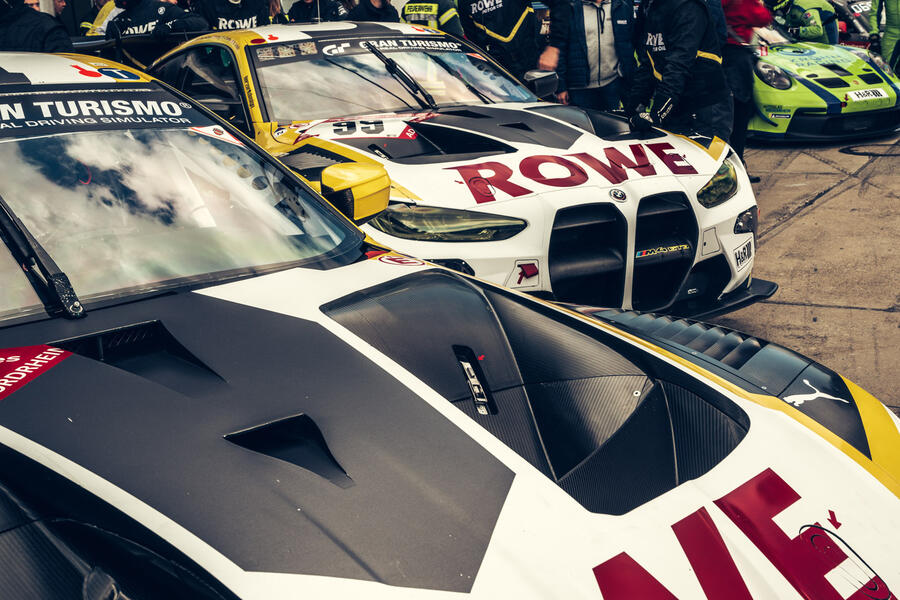
“We were flexible like this,” says Neerpasch. “We took the 5 Series and put the larger 735i engine in, different dampers, brakes, wheels and you couldn’t see from the outside that it was a fast car. The dealers noticed and asked [if they could] have a car like this.” Well, wouldn’t you?
Then there was the fabulous BMW M1 of 1978, about which there’s a distinct tone of regret in Neerpasch’s voice. This Giorgetto Giugiaro-designed supercar, of which only 453 street versions were made, is a stunning signifier of M’s early ambition and was very much the chief’s baby. Not content with cutting Ford down to size in the ETCC, its next target was the Porsche 935 in Group 5, at which the mid-engined M1 was aimed.
Alas, a direct hit never came. It’s a complicated story, and one involving the late transferral of production responsibilities from ailing Lamborghini to Baur, BMW’s development of the M88 straight six (sire to so many outstanding M division engines of yore) and the single-make, star-studded Procar series, the likes of which has never been seen since. Eventually, regulation changes in sports car racing killed the M1 project early, but what’s interesting from a road-legal perspective is that Neerpasch still feels the idea has a place.
“When I left BMW [in 1981], the priority was F1,” he says. “I think it was a mistake because they forgot about the M1.” He suggests an M1 is still missing from the line-up today
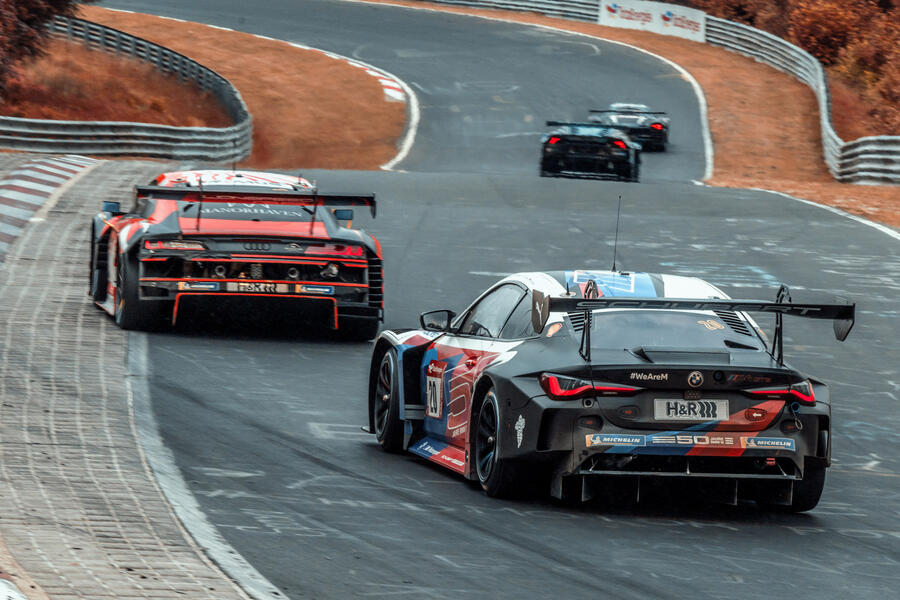
The prospect of a Porsche 911-esque lineage of M-badged mid-engined halo cars is mouth-watering, which is why Neerpasch’s successors often seemed keen on the idea. In the post-millennium era, legendary M boss Albert Biermann is known to have longed to build an answer to the Mercedes-Benz SLS. “From an engineering perspective, we have the skills and we’d love to do it,” he told Autocar in 2011. A few years later, his successor, Carsten Pries, suggested that the BMW mothership’s principal reservation in green-lighting such a machine – the questionable business case – might be softening, although as it transpired, never enough.
M division bigwigs aren’t the only ones to have banged their heads up against this wall. In a backroom in Buchloe are the parts for an Alpina conversion of the plug-in hybrid BMW i8 with fatter tyres, a higher cylinder count and considerably greater intent than the genteel production version. It was never permitted to see the light of day, and the BMW Group’s overriding stance on the matter has this year been reinforced yet again.
M’s 50th birthday present to itself is “the most powerful BMW M car ever” and “its first stand-alone vehicle since the legendary BMW M1”. The official literature also refers to “strikingly sculpted surfaces” and “extravagant lines”; nothing less than “a complete reimagining of the high-performance segment”, in fact. It all sounds wonderfully supercar-y, but the 740bhp BMW XM is no such thing. With dispiriting predictability, it’s an SUV.
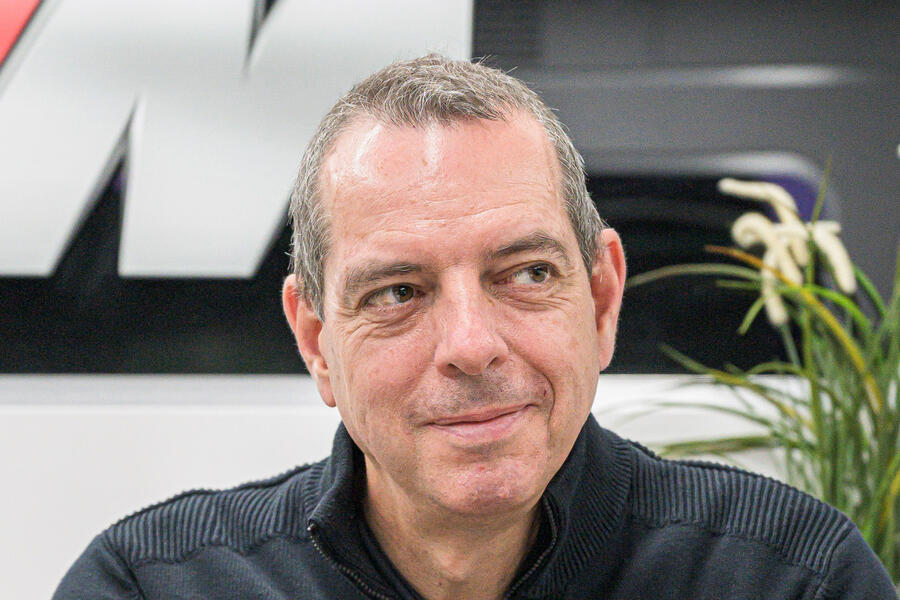
Dutchman Frank van Meel will oversee the introduction of the XM after returning for his second stint at M’s helm in November last year. He also happens to be in the room with us, having respectfully listened to the man for whom his post was invented. An engineer, he’s an interesting guy: one whose lottery-win acquisition would be an M1 but who also seems to be an authentic advocate for the crossover side of the equation. Maybe that’s just realism. He describes the XM as “logical”, and in 2022 perhaps logic is the only ideal any responsible automotive exec can strive for.
Van Meel is taking charge of M at the most secure, profitable and diversified time in the marque’s history, but it’s also a much more complicated and confusing one. Everything in the line-up will soon need to be hybridised, but when and to what extent are questions that still need answering. At some point, full electrification beckons – an M-badged technology-demonstrator concept will be revealed later this year – but as of now, the right power-weight-price relationship isn’t considered viable.
This much we already know. The BMW i4 M50 is fast and capable and it’ll even do neat little powerslides but it’s no M car, lacking the underlying aggression and the trademark free-flowing agility. An all-electric BMW M3 it is not, but that will come. Van Meel says it’s unlikely the next M3 will follow in the tyre tracks of its Mercedes-AMG rival and dramatically downsize its engine. The upcoming Mercedes-AMG C63 will sacrifice its V8 for a four-cylinder hybrid but van Meel says the M3 will hold on to all six pistons (albeit possibly with e-assistance) right up until it does eventually go all-electric. Motorsport will inform the decision.
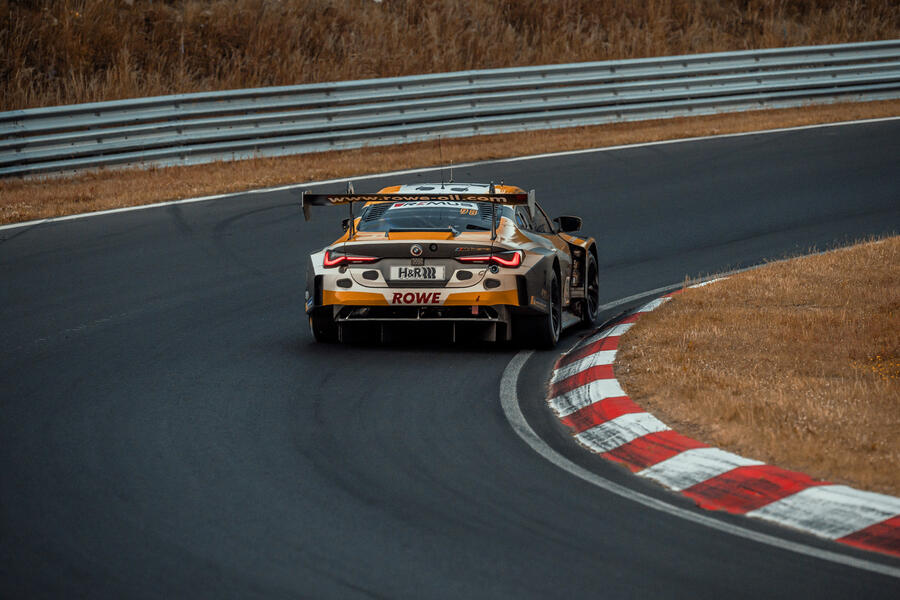
He says: “At the end of the 2020s, is hybrid still the right answer or is the expectation then that you do a really high-performance electric drivetrain that can also be used in racing?”
That’s good to hear. Clearly, racing remains integral to M, despite the scales shifting so dramatically in favour of street cars over the decades.
“It would be wrong to think you don’t need racing,” says van Meel, who reckons the legitimacy of any motorsport-rooted marque can last only 10 years or so after track activities end. “You need to know how to do race cars [in order] to do high-performance cars, because otherwise it’s just a logo.”
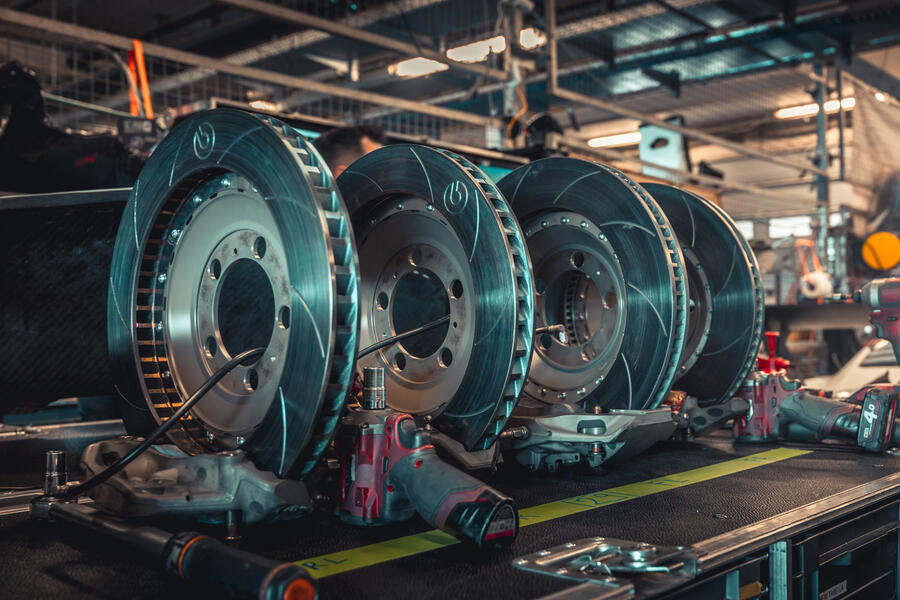
He describes a pyramid: racing cars at the apex, street-going M cars in the middle and M-lite M Performance models as the broad, high-volume base. Back in the 1970s and 1980s, the top tier of the pyramid was chunkier, but even today, though proportionally much smaller, it’s still at the top in an ideological sense.
Sure, a BMW X6 M weighing 2.3 tonnes and costing £120k doesn’t seem aligned with anything Cecotto or Ravaglia would recognise or condone. But again: logic. Last year, M sold more than 160,000 cars, a substantial proportion of them SUVs.
Maybe that’s why the BMW M4 GT3 looks so irresistibly good on track this weekend, here at the 50th running of the Nürburgring 24 Hours. They are a tonic – everything an X6 M is not.
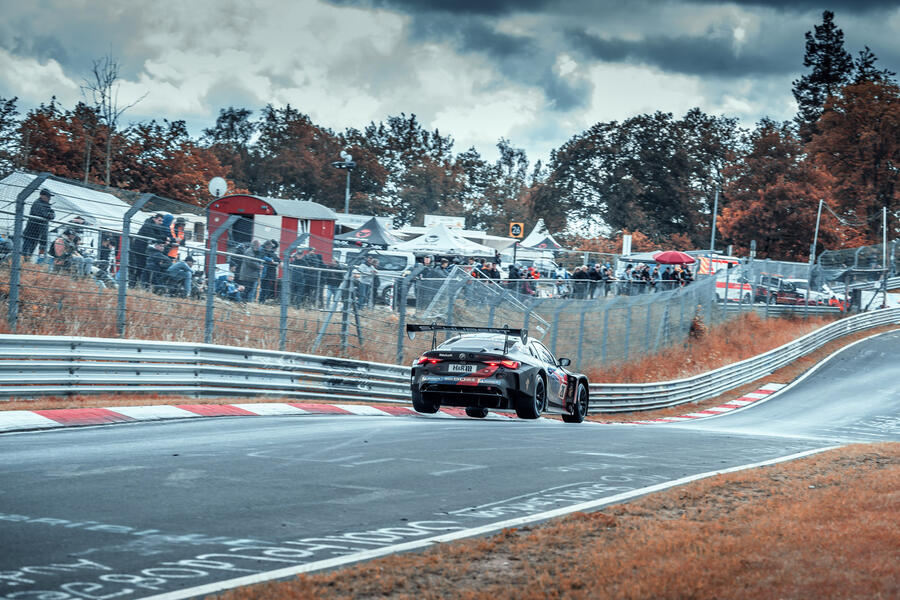
This is the debut season for the new competition car, which replaces BMW M6 GT3 so barge-like when seen on TV that it was the source of hundreds of memes on social media. The M4 is different. The awkward aggression of the 150mm-narrower street M4 is subsumed by the aero kit, lower ride height and wild liveries. The classic 3.0 CSL Batmobile silhouette is there. Witnessing the BMWs battle their Audi R8, Porsche 911 GT3 and Mercedes-AMG counterparts feels innately special. Timeless, even.
More so at the site of M’s very first victory, back in 1973. At night, the Nordschleife takes on the atmosphere of a medieval army camp, the cars as battered and gladiatorial as grizzly soldiers. You need to experience N24 to know the edgy warmth that pervades. Colourful flares and branded neon signs cut through the darkness, accompanied by the aroma of hot brakes and lighter fluid, all of it overlaid with six-, eight-, 10-cylinder thunder, Ride the Lightning and front splitters crashing to earth at Pflanzgarten with a meaty scrape.
’Ring romance aside, the weekend is a chastening one for M, Neerpasch included. Even at 83, he was up until 3am last night and is here as advisor and mentor to the youngsters of the works BMW Junior Team, who are, or were, racing the #72 M4 GT3, striking in its German colours. As one mechanic kindly puts it, a “miscalculation” entering the flatout double-apex Mutkurve resulted in the mother of all swappers and the car being collected by both sides of Armco. Nobody was hurt but birthday disappointment is compounded by the customer teams, who contributed their share of DNFs during the night, despite the #99 Rowe M4 GT3 qualifying on the front row. Ultimately, just one M4 GT3 takes the chequered flag, the consolations being that this is only the car’s tricky first season, and the raw speed really seems to be there.
The ‘Ring to Garching
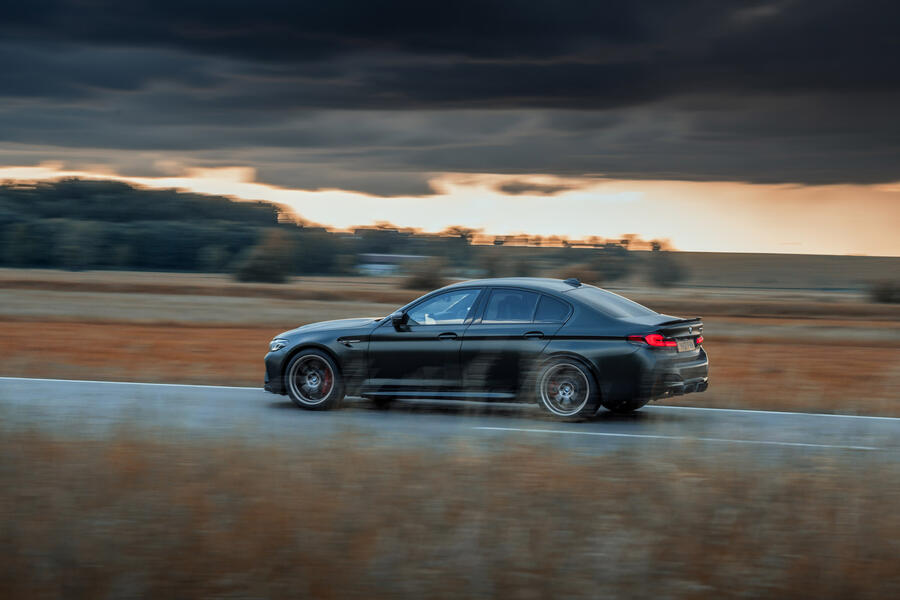
Say-essss! If the Alcantara-wrapped wheel and the M Carbon buckets that set your hips to low-slung perfection somehow didn’t give the game away, you’d know you were inside something special just by opening your ears and tuning into the crowds. You need to listen beyond the induction hiss, the gentle but clear turbocharger whine and the unvarnished engine note, much of which comes over in high fidelity because the car’s composite bonnet seems to allow the frequencies to permeate it far better than does steel.
Drive the new BMW M5 CS through any concentrated mass of German petrolheads and people are going to excitedly point out those initials, again and again and again. We must have heard say-essss uttered from the roadside 50 times this weekend as our limited-production, luxe-extreme saloon ferried us from paddock to Adenau; to the slippery, downhill Brünnchen; to Hohe Acht at night so we could trek down to Karussell.
Equally, for our 320-mile stint from the Nürburgring to Garching and M’s development centre, it had to be the CS. For one thing, even an ordinary BMW M5 is already a finer GT car than any Ferrari 812 Superfast or Aston Martin DBS Superleggera. Sorry if that doesn’t stick to the script, but it’s true. Big, bad M saloons have always been superb in this respect. Speed, handling, comfort, and just enough specialness in the powertrain and cabin make it so. And as our friends at the ’Ring proved, there’s meat on the bone in terms of cachet.
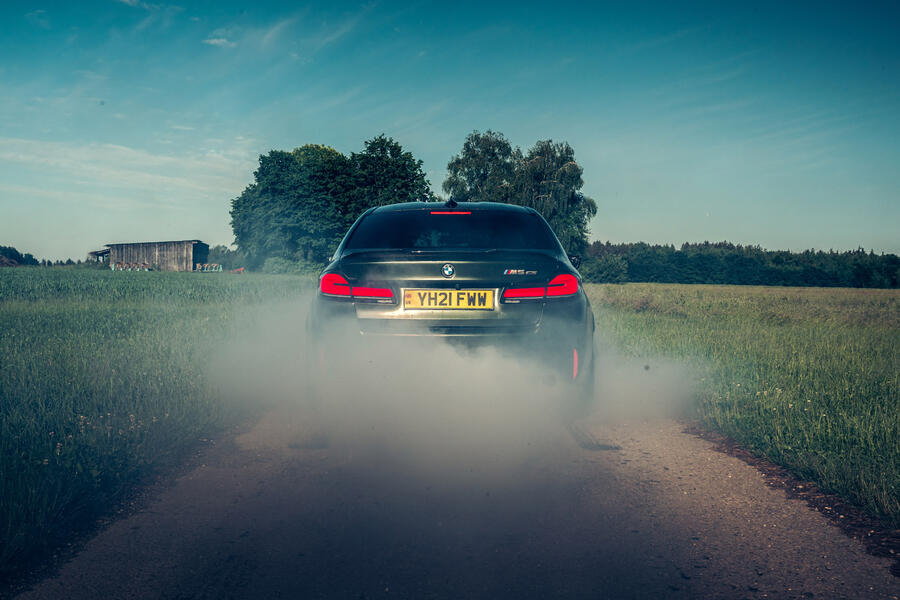
But here’s the thing: rather than torching those strengths in pursuit of fractionally quicker lap-time performance, as you might expect of any gold-wheeled, bonnet-vented flagship derivative with bucket seats even in the back, the ‘hardcore’ 626bhp CS only enhances them.
There’s too much detail to go into here, but the major revisions that morph M5 Competition into M5 CS amount to 70kg saved largely via the carbonfibre bonnet and removal of isolation materials, plus an overhaul of the suspension and anti-roll bar settings. Shorter springs also drop the ride height 7mm, which might be another cause for concern were it not immediately apparent that the CS moves with a silky deftness the regular M5 cannot match. There’s a softness and a willingness to breathe with the road that makes you wonder whether the ex-Ferrari engineers that developed the Alfa Romeo Giulia GTA have been seconded to M. And yet, just when progress is starting to feel a little un-Germanic, there it is: an iron core of body control and steering precision that you can’t quite believe exists in something so substantial.
It’s a remarkable device, the M5 CS: monolithic in its stability on the autobahn as the ripe 4.4-litre S63 V8 fires it the far side of 180mph, yet flowing with cultured, responsive poise when the driveline is flicked into rear-drive mode for those fast, smooth Bavarian country roads. You wield the M5 CS in a way you can’t quite achieve with any of its rivals, Porsche Panamera included. Is it a masterpiece? Without doubt. When you consider what this car wants to be, and the manner in which it fulfils that challenging, multi-faceted role, you might even go further and chalk it up as the best car in the world, if that’s not too soppy. It’s just superb.
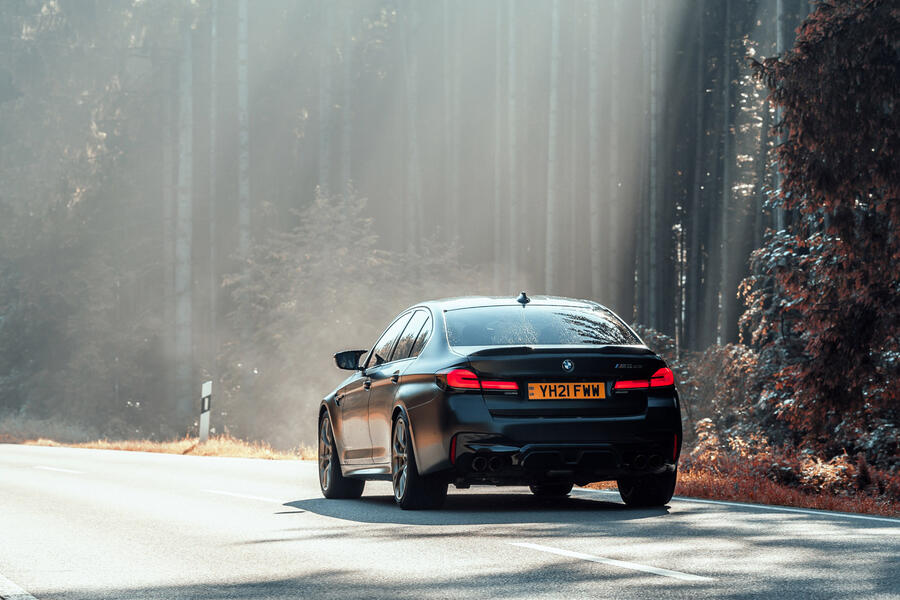
The significance of the CS goes deeper, though. Like all concerns in the performance car game, in 2022 BMW M has a weight problem. Safety tech, ballooning footprints, added NVH materials and, in some cases, battery packs are taking their toll. Today’s M3 carries more kilos than the millennium-straddling E39 M5 and, as van Meel admitted inside the M Motorsport truck, “there is no way of reversing”. Neither does he think any silver bullet will be incoming. Turbochargers, four-wheel drive (one of van Meel’s major, and successful, initiatives), automatic gearboxes: M has adopted them all when necessary, and mostly with a mastery that has meant the finished products always remained captivating and desirable. But weight? It’s difficult to get excited about a near-1800kg sports coupé, which is exactly what the current M4 Competition is. Even the upcoming ‘baby’ BMW M2 is expected to muller the scales at 1650kg.
So at the wheel of an M4, you’re constantly aware of its mass. And while we’ve yet to experience the new M2 on the road, its M240i understudy is decidedly hefty. Hybridisation will make matters worse, but if the M5 CS proves anything, it’s that M can almost overcome even the weight conundrum. The sheer quality of the M5 CS’s blend of ride and handling, and the way it disguises its 1950kg, should act as the benchmark for all future M division products, especially the electric ones. This incredible super-saloon is a beacon for M, yet of its own making. In essence, the cat’s out of the bag.
Inside M’s headquarters
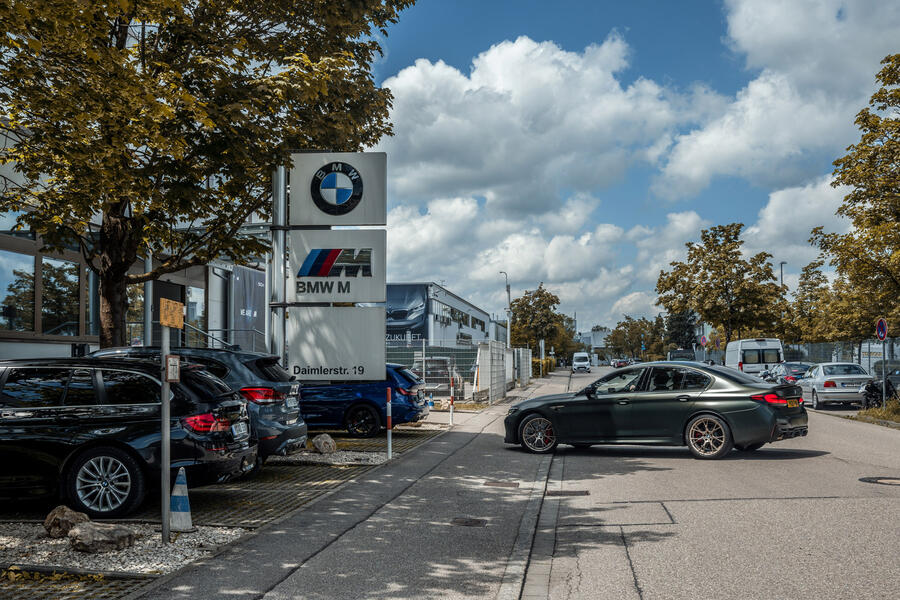
Our trip draws to a close with Hans Rahn at 19 Daimlerstraße, Garching, M’s home since 1986, when Motorsport GmbH needed bigger facilities for an all-out assault in Group A touring car racing and made the move from Preussenstraße. Rahn is head of prototyping at M and has oversight of not only the manufacture of the M3 GT4 and GT3 twins but also M’s many developmental road cars, which are dotted around the place, partly camouflaged. Life-cycle updates and all-new M cars hatch here, with experimental parts often 3D printed and then bolted on.
Note, however, that the finished road cars aren’t actually built here. It’s too intimate at Daimlerstraße, and these days, the volumes involved with those cars are far too large. Any M3, M8 or X5 M is assembled alongside its more humdrum brethren on BMW’s regular lines. The exception was the E34 M5, every example of which was born in Garching between 1987 and 1996.
It means that every machine we see here today – from the wild new M4 CSL, to mules for the upcoming M3 CS, to even an early version of the next-generation, twin-turbo V8 hybrid M5, due in 2025 – is some form of test bed not intended for public consumption. Not that this prevented a camouflaged M2 from dicing with us on the autobahn en route here, its driver giving our M5 CS an M-certified thumbs up before peeling off and up a slip road.
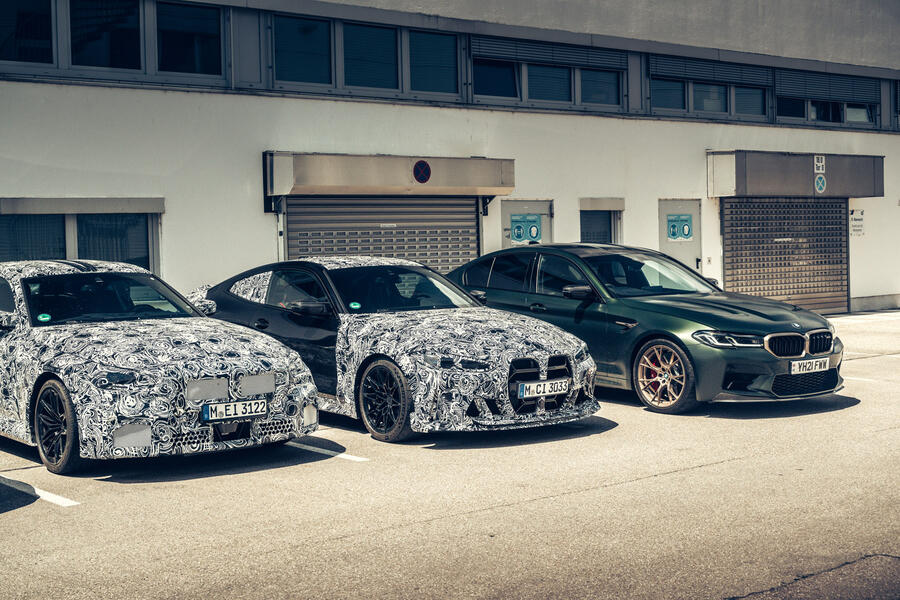
There have been some even more clandestine activities here over the years, of course. Development for the E46 M3 CSL didn’t end when the showroom model arrived in 2005. M instead plumbed in the 4.9-litre V8 from the E39, keeping the exterior perfectly the same but for a second circular intake in the front bumper. How dreamy is that? An E60 M5 CSL was also conceived, only with the rev ceiling taken from 8250rpm to 9000rpm and the cumbersome SMG gearbox swapped for the Getrag-built dual-clutch ’box that appeared in the E92 M3. Just imagine the glorious, F1-esque sound that makes. The Chris Bangle-era M6 was also fitted with active aero and lightweighting measures, and the experimentation continues to this day, although just how much time M spends on these projects is something most of us will never truly know.
As with any successor to the M1, the business case is the reason many of these fantastical projects fail to make it out of the workshops. However, if nothing else, they demonstrate an encouraging and continuing desire to do Very Cool Stuff within the halls of M GmbH. That the background of one of the screens in the M4 GT3 assembly hall (the very same hall where the Group A M3s were made) shows a Jägermeister-livered M1 Procar in full attack mode supports this notion. Naturally, rock music also rings out, although in this case quietly, and against a backdrop of spotless floors and truly jewel-like suspension parts rather than the dark, anarchic energy of the Nürburgring at night.
It’s a fascinating place, here on Daimlerstraße. Reassuring, too. It’s quite something to have met Neerpasch, who delivered BMW M into this world, at the circuit where it took its famous first victory, and to have then driven to the venue where, 50 years later, the same energy is still being expended in the development of racing M cars and their street-based counterparts.
I guess that, among the flurry of butch crossovers, fat grilles and piped-in exhaust sounds, it’s easy to lose that all-important sense of authenticity. But rest assured: beyond the ‘logic’, that authenticity remains intact. Let’s hope we can still say the same thing in 2072. For now, happy birthday, M.
Le Mans, here we come
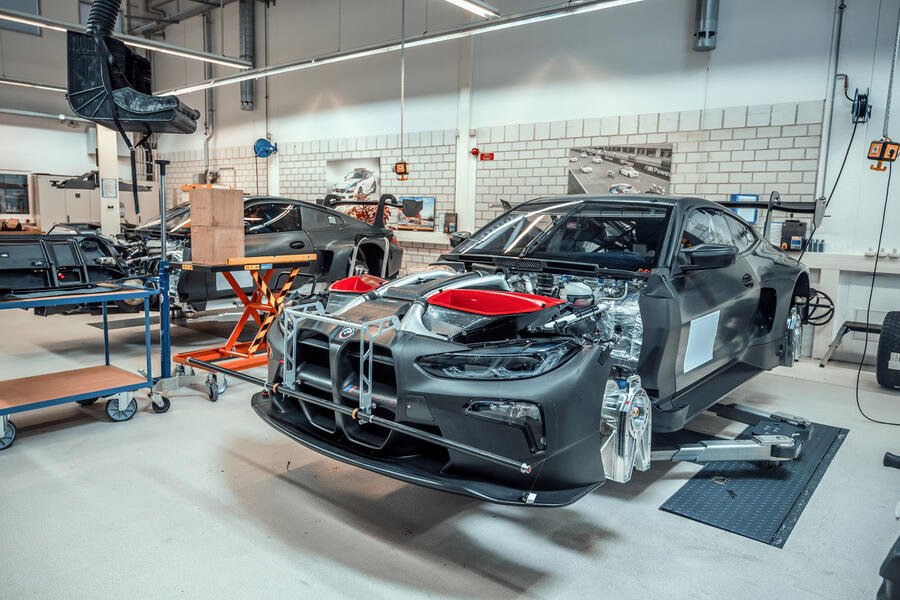
BMW was generous with our level of access in Garching – except for one item. Awkwardly (hastily?) hidden under a sheet in the shadow of half-finished M4 GT3 cars was BMW’s new international prototype sports car racer. They said we couldn’t quickly whip off the sheet, or even take so much as a peak beneath it, but confirmation wasn’t necessary. The bulbous haunches, the immense scope of the wing, the barely hip-high roof of the bubble cockpit, all against the relative tininess of the footprint. Pure prototype racing car.
Exactly one week later, the thing was officially revealed in proper works livery as the BMW M Hybrid V8 – part of the new generation of LMDh endurance racers. Two cars will initially compete in the IMSA championship next year with Rahal Letterman Lanigan Racing, en route to an appearance at Le Mans in 2024, although that is still to be confirmed.
BMW may attempt to draw a line between the car’s twin-turbo V8 hybrid powertrain and that found in the new XM SUV – hardware that will also appear in the next M5 – but in truth there are few similarities. The racing car’s 10,000rpm heart is said to be the reprised P66 DTM engine originally used between 2012 and 2018, while the hybrid bit is a standardised system by Xtrac with a motor-generator unit housed inside the gearbox casing. Porsche, Audi, Alpine, Lamborghini, Cadillac and most likely McLaren will all use the same hybrid set-up, although alongside its 4.0-litre engine, the M Hybrid V8’s Dallara-built chassis is unique to BMW.
The car is of limited relevance to the kinds of M products you or I will be able to buy, then, but it’s nonetheless significant. For the first time since it left Formula 1 in 2009, and top-tier sports car racing in the wake of the Le Mans-winning V12 LMR, BMW has a talismanic motorsport machine to shout about. For such a storied outfit, that feels right and proper.

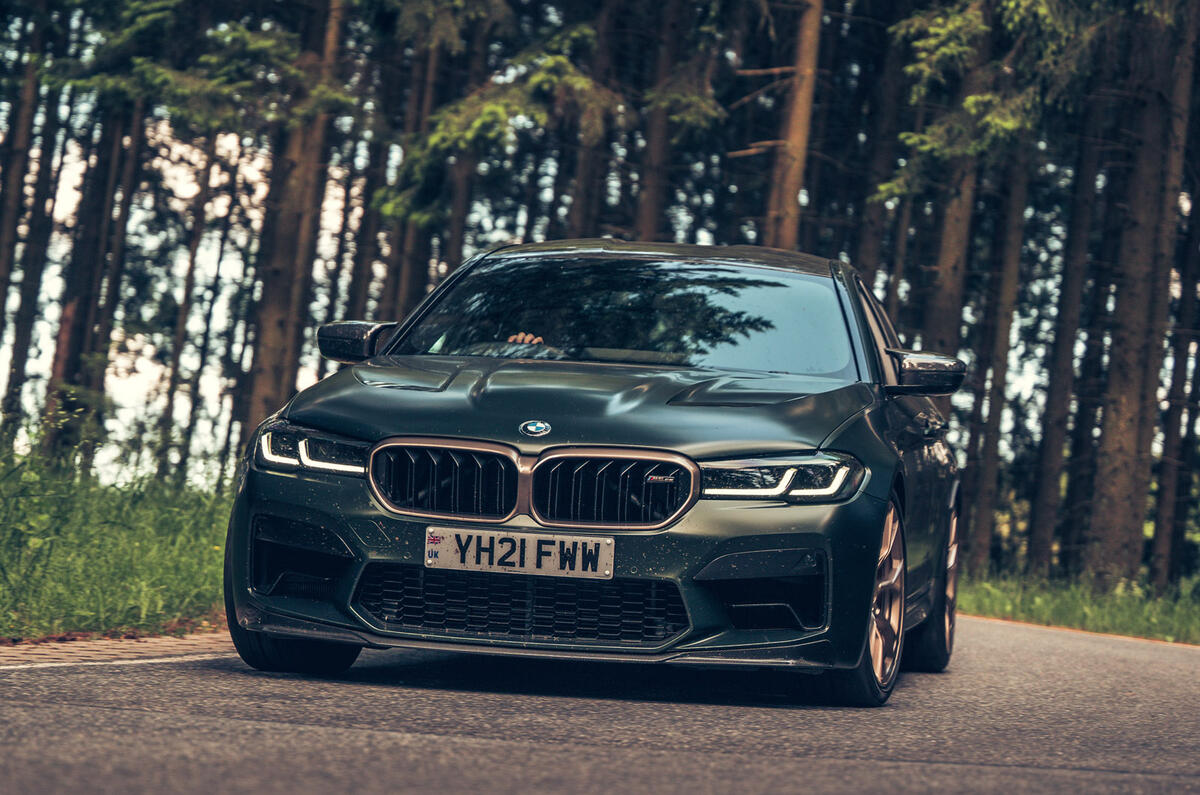
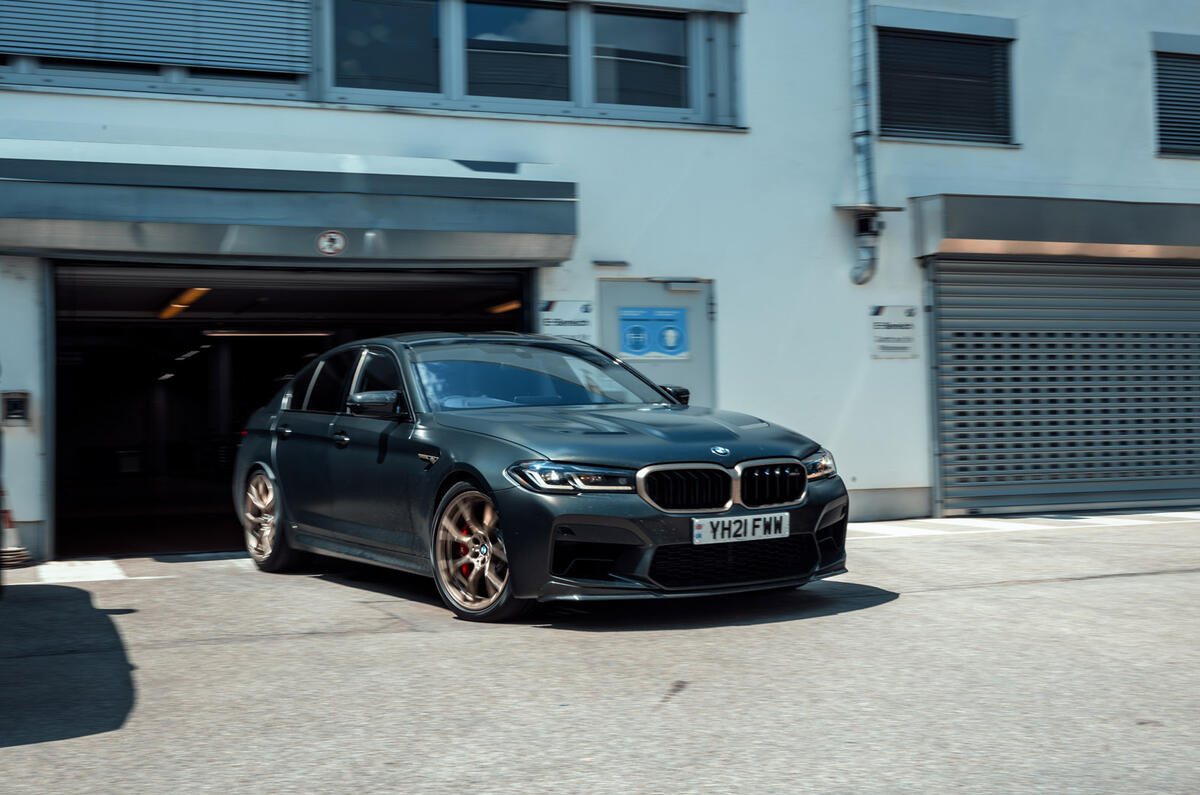
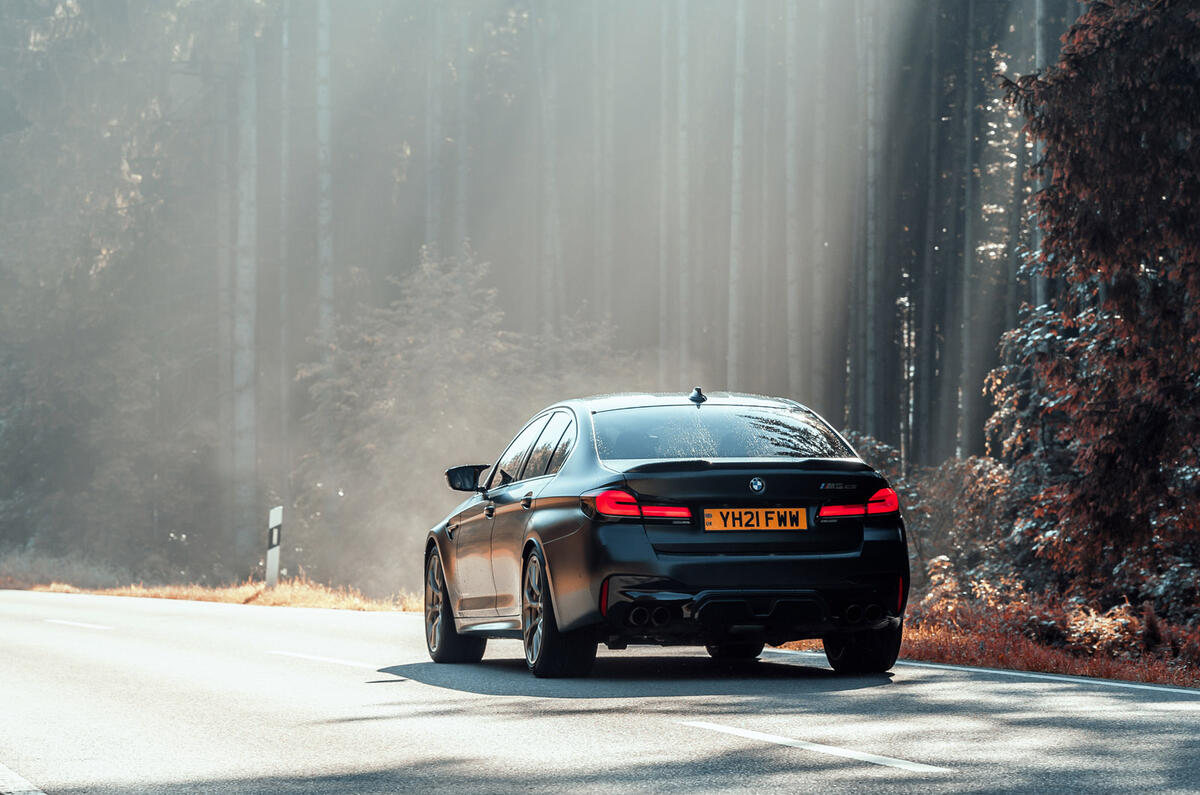
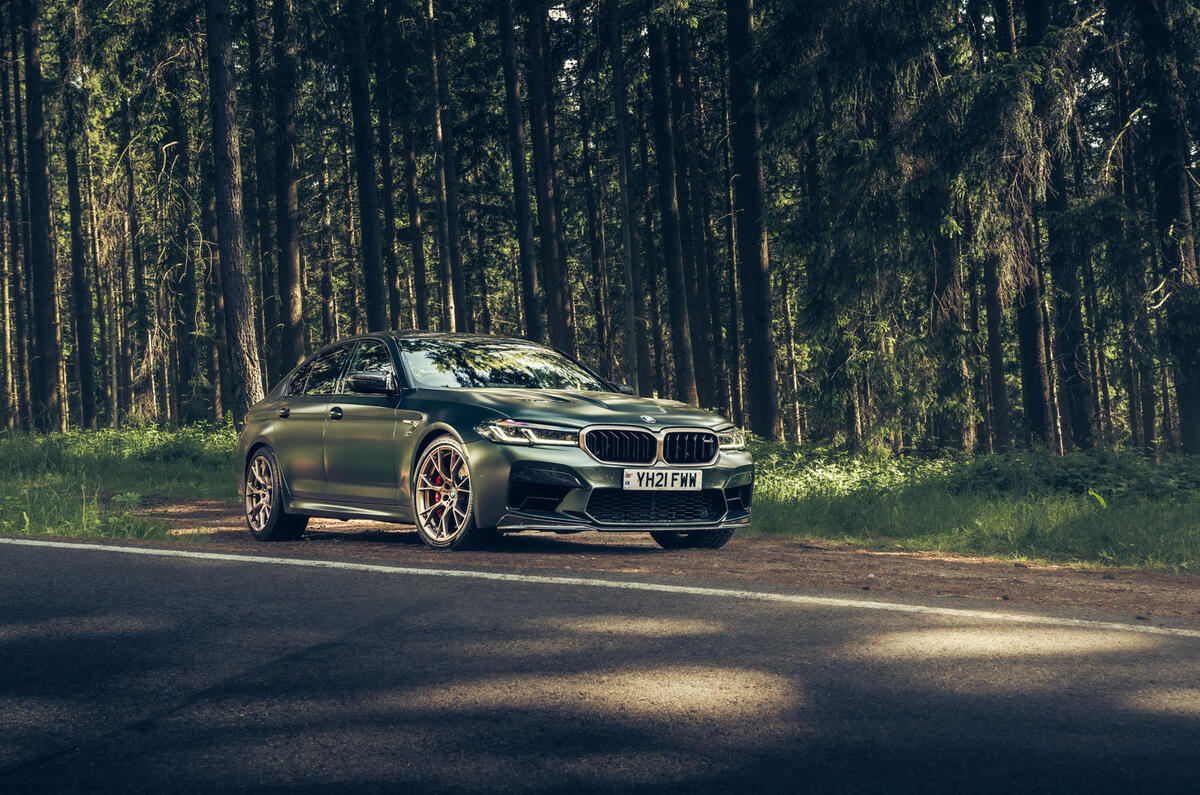
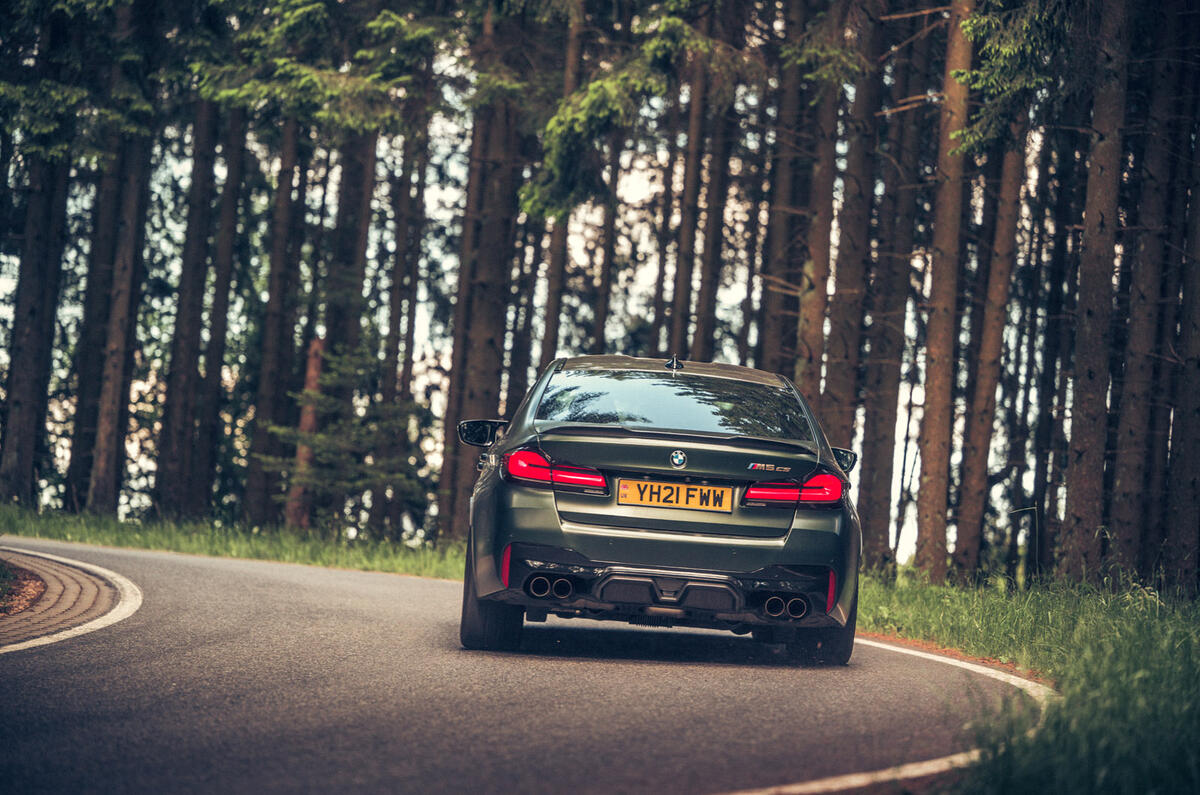
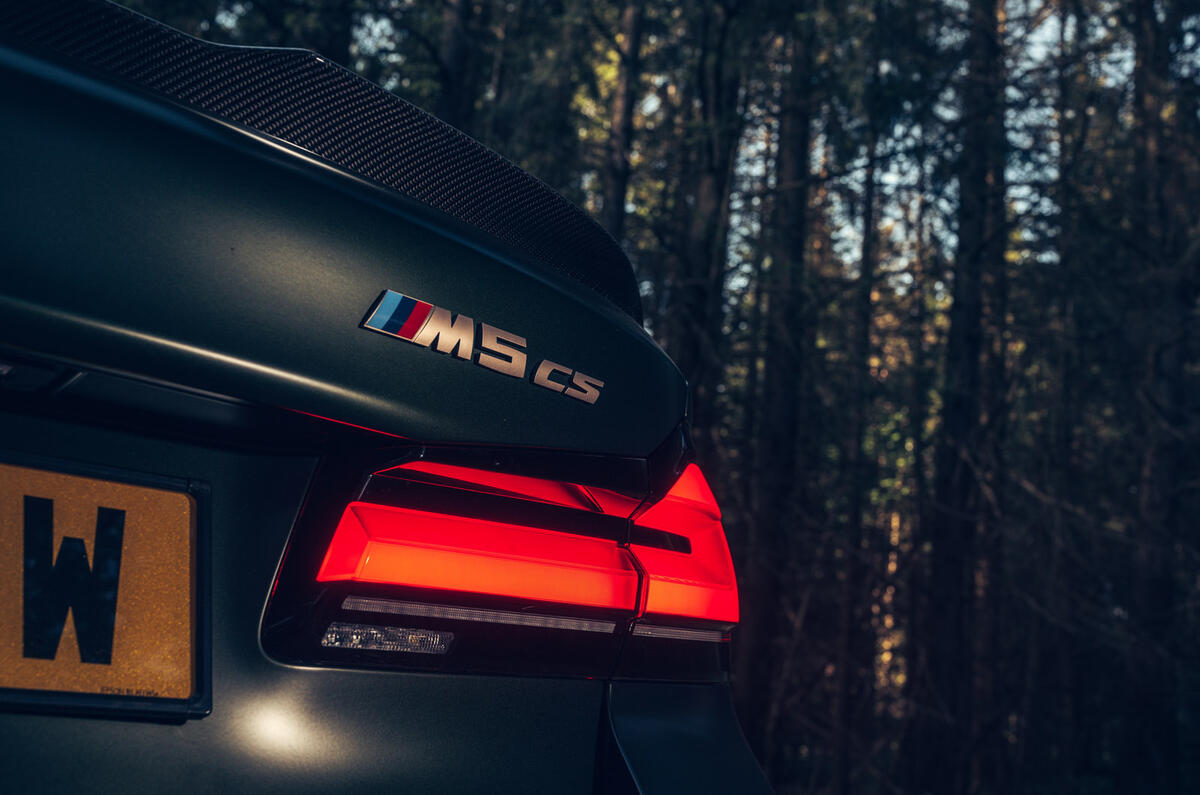

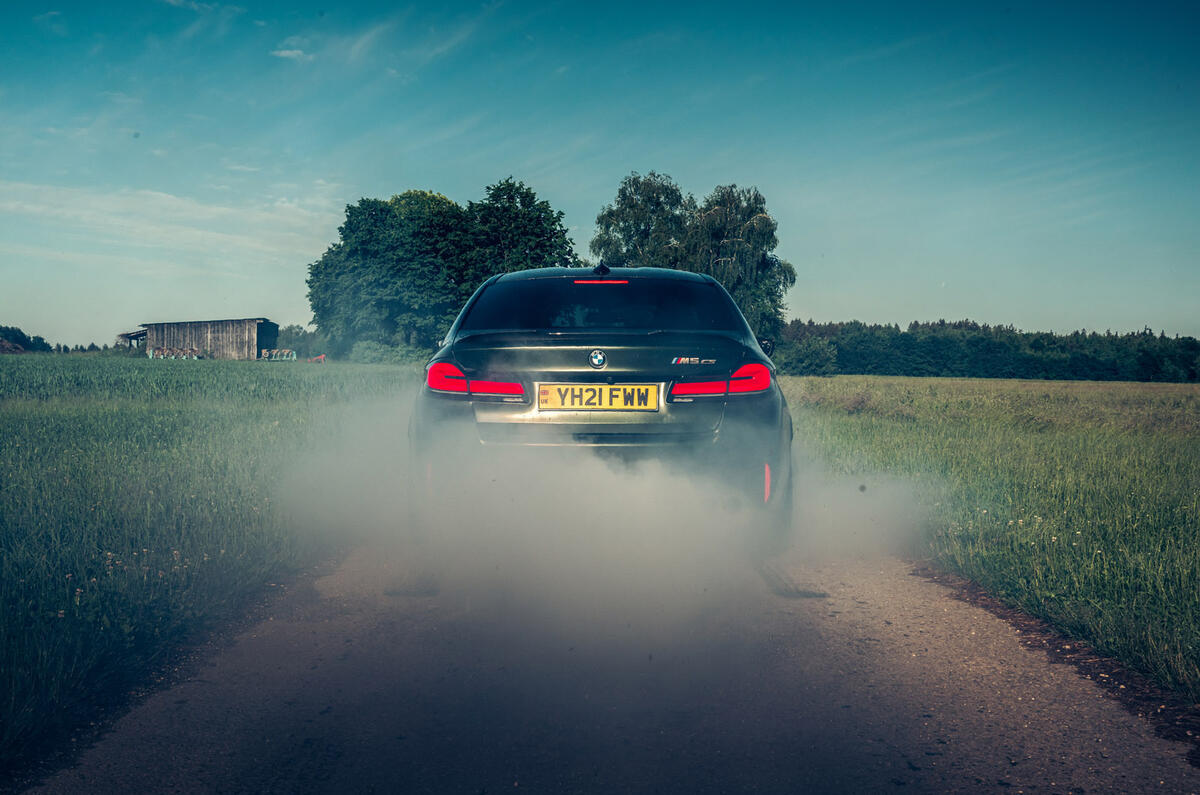
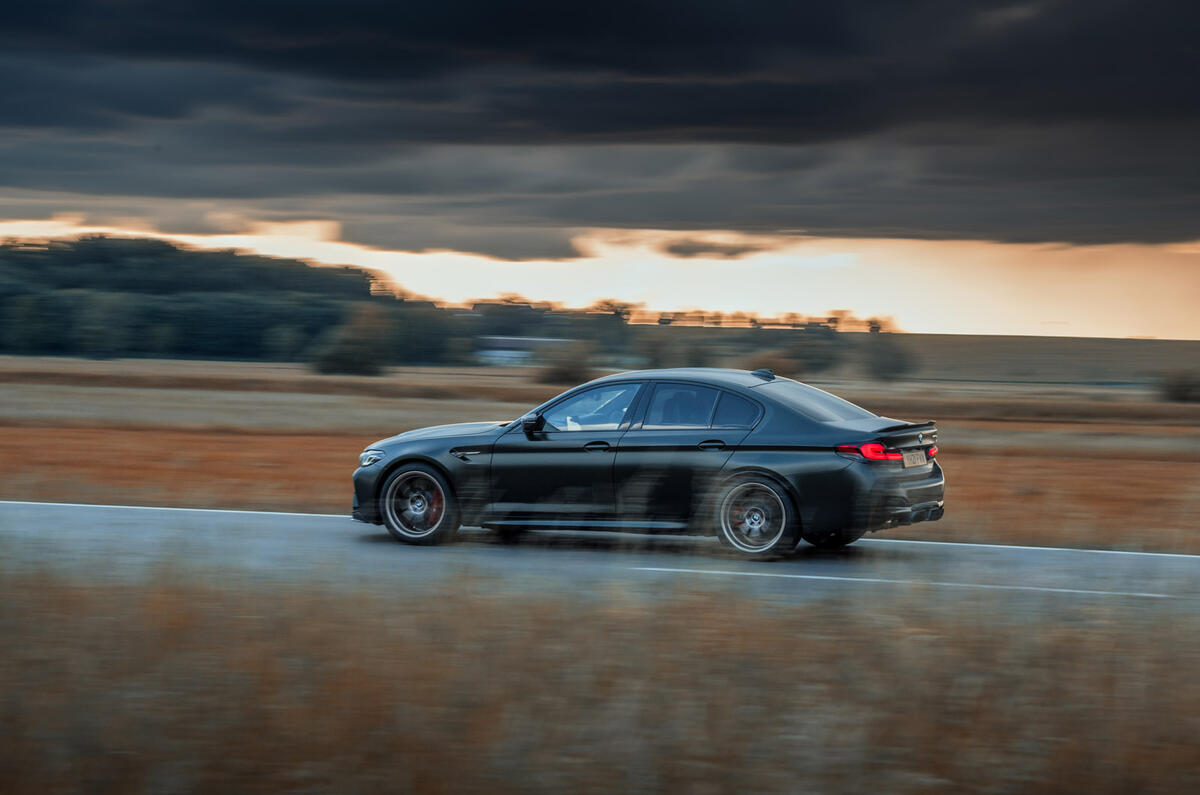
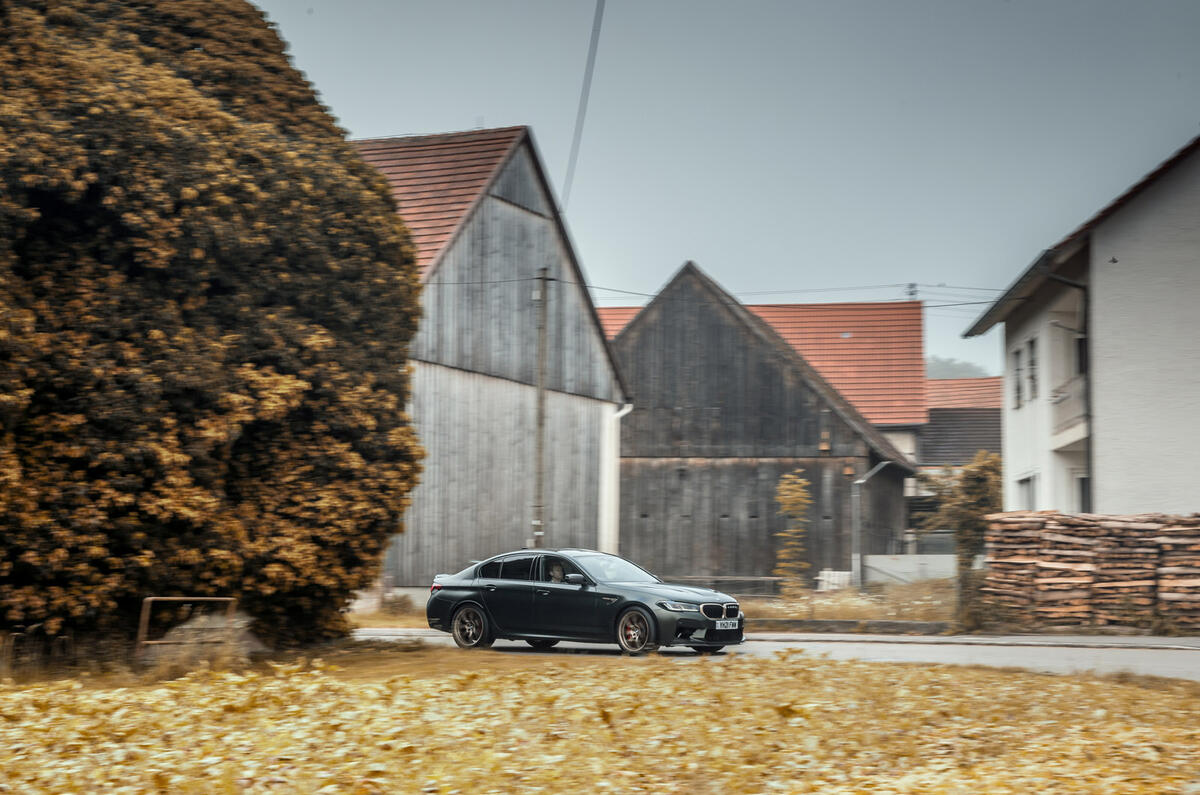
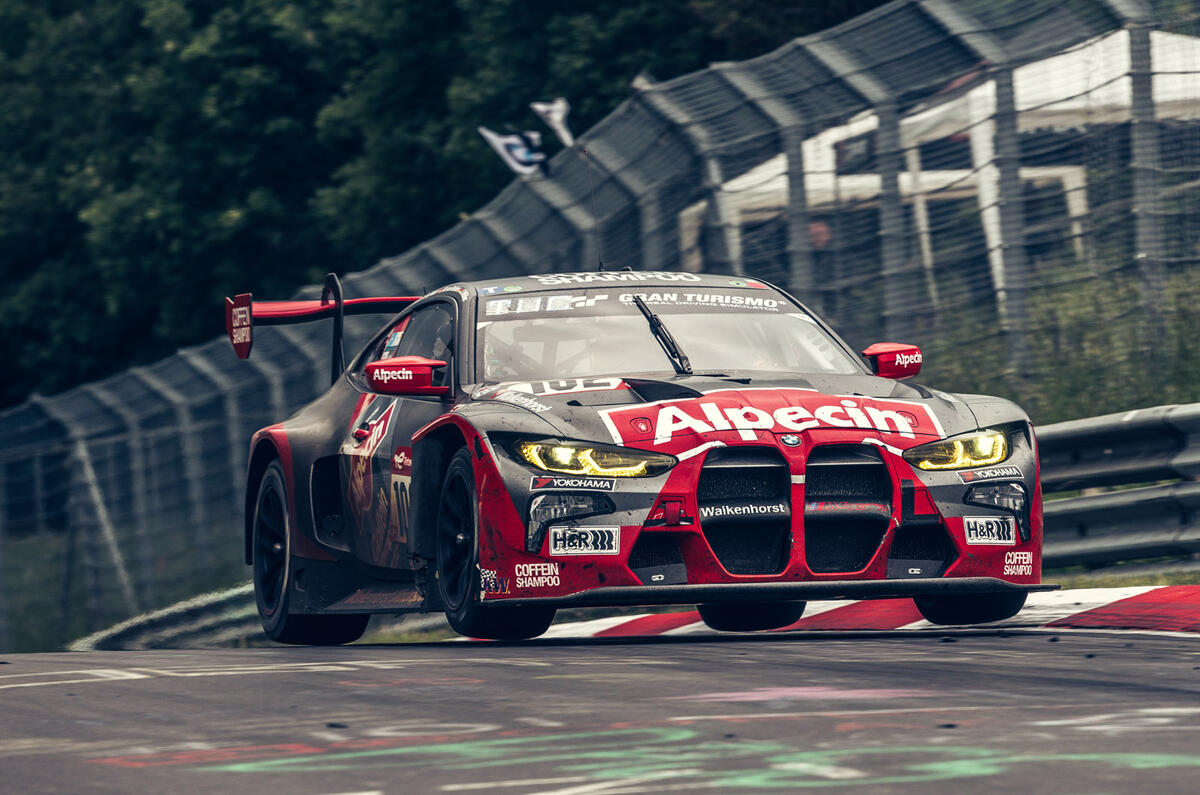
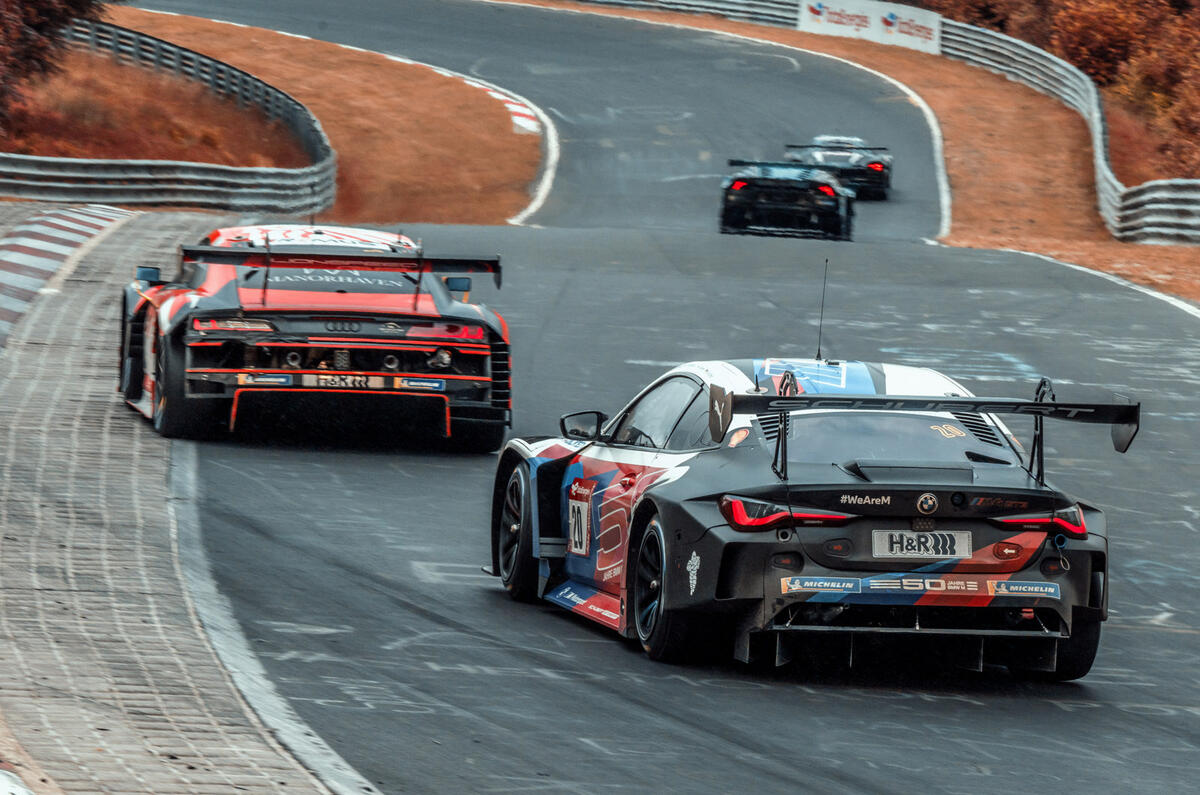
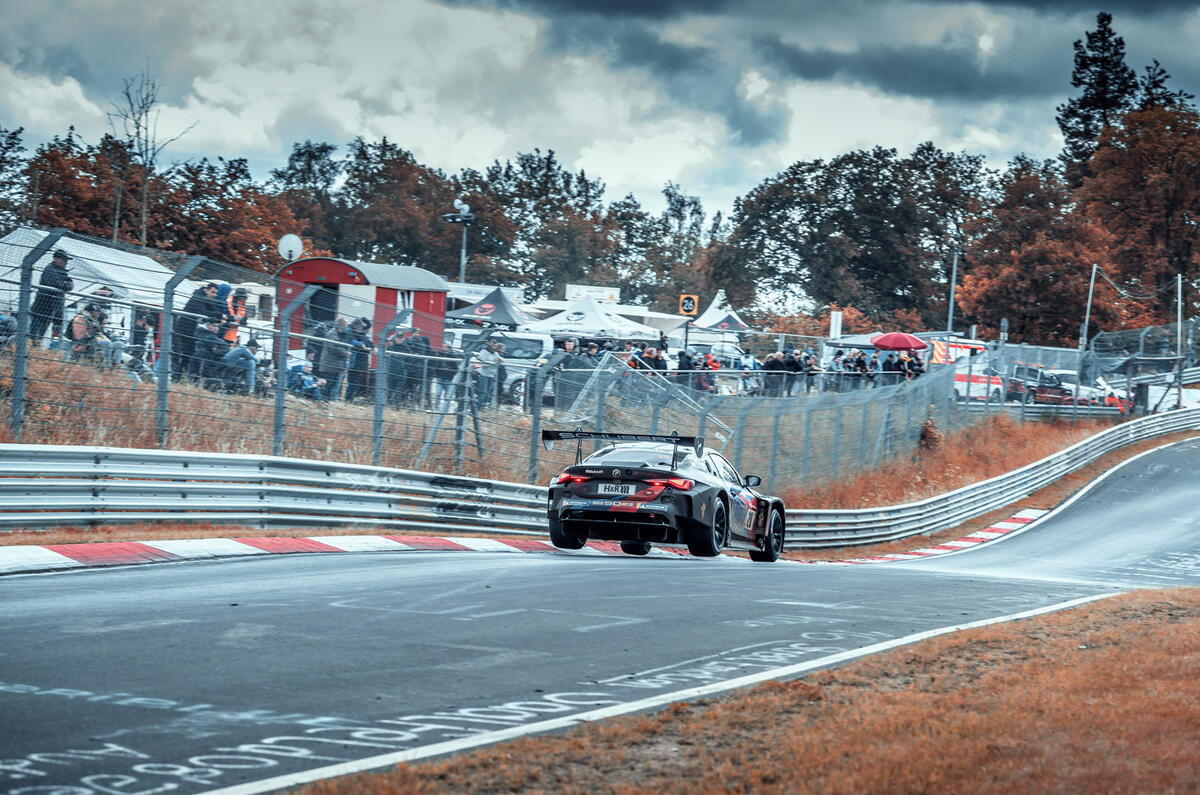
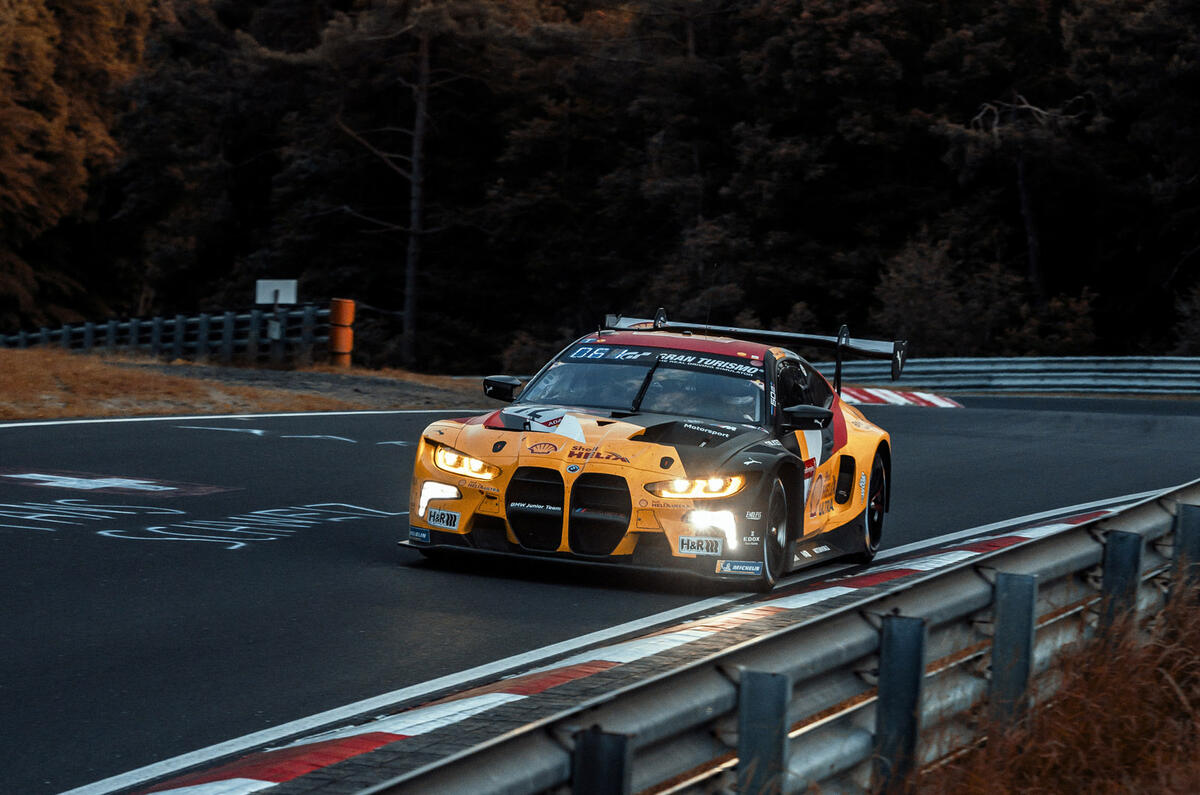
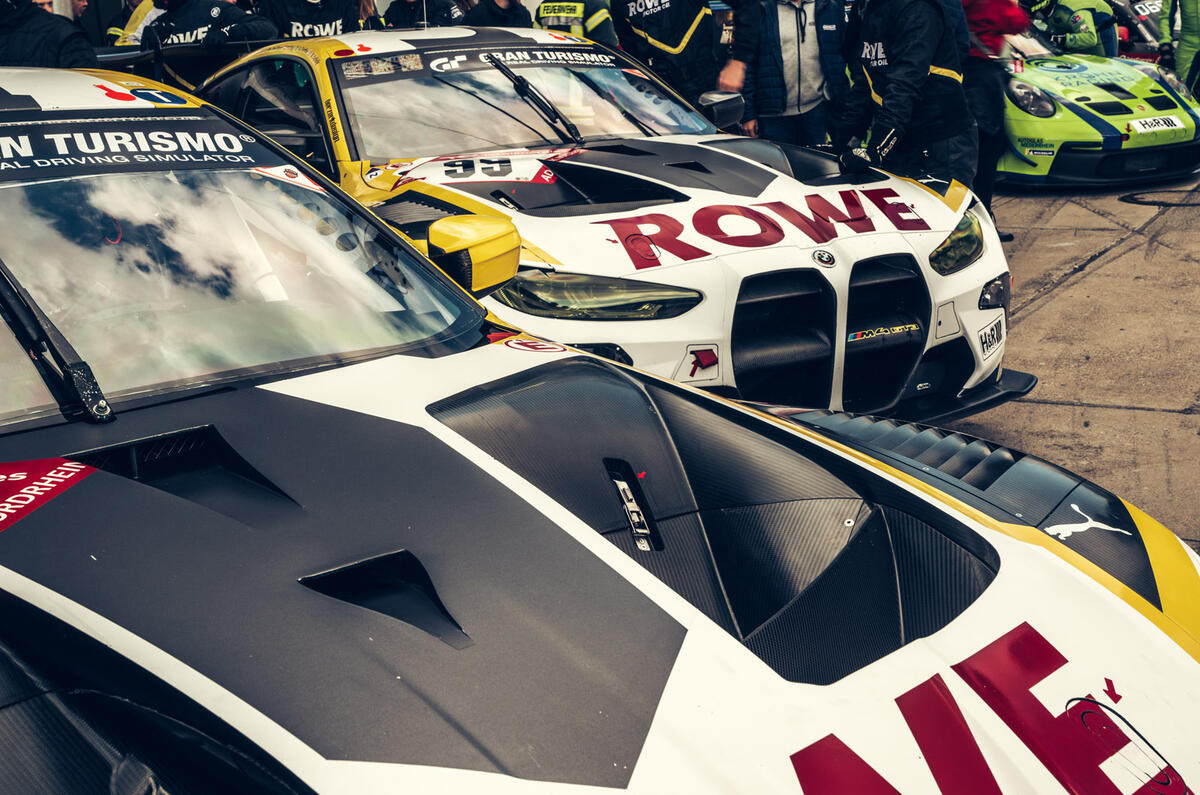
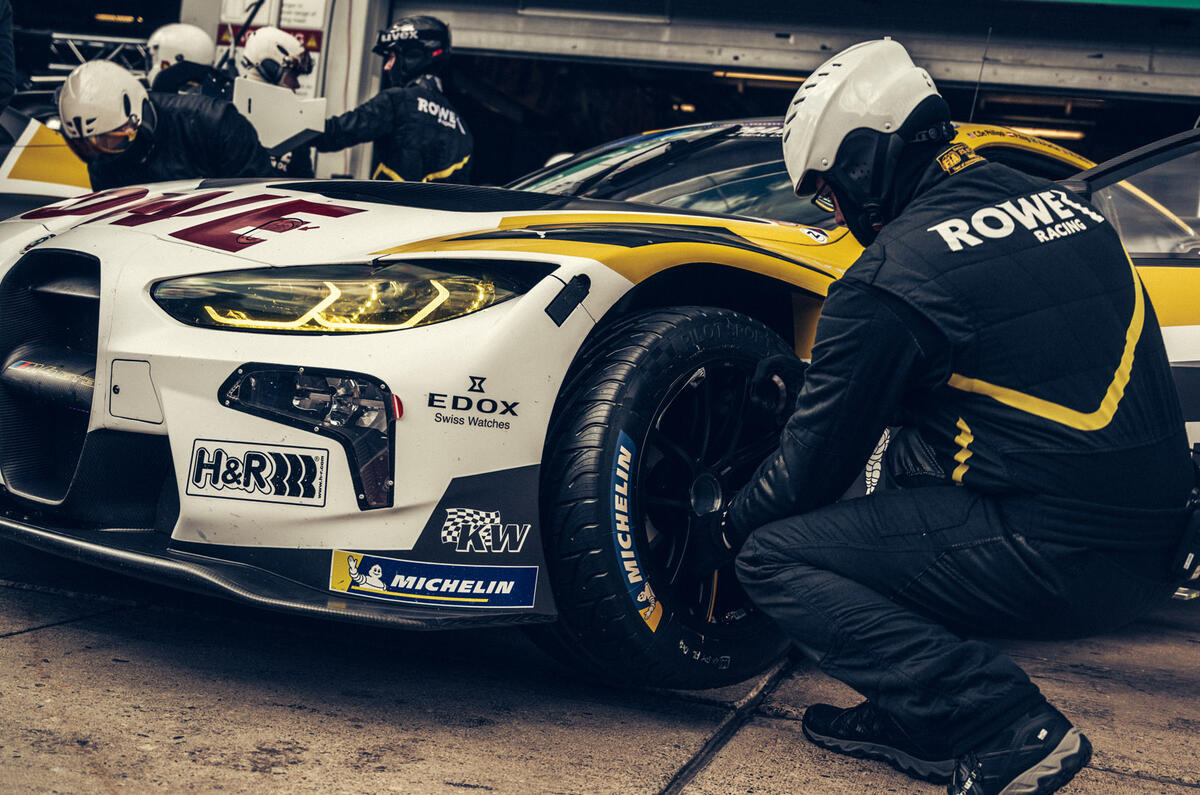
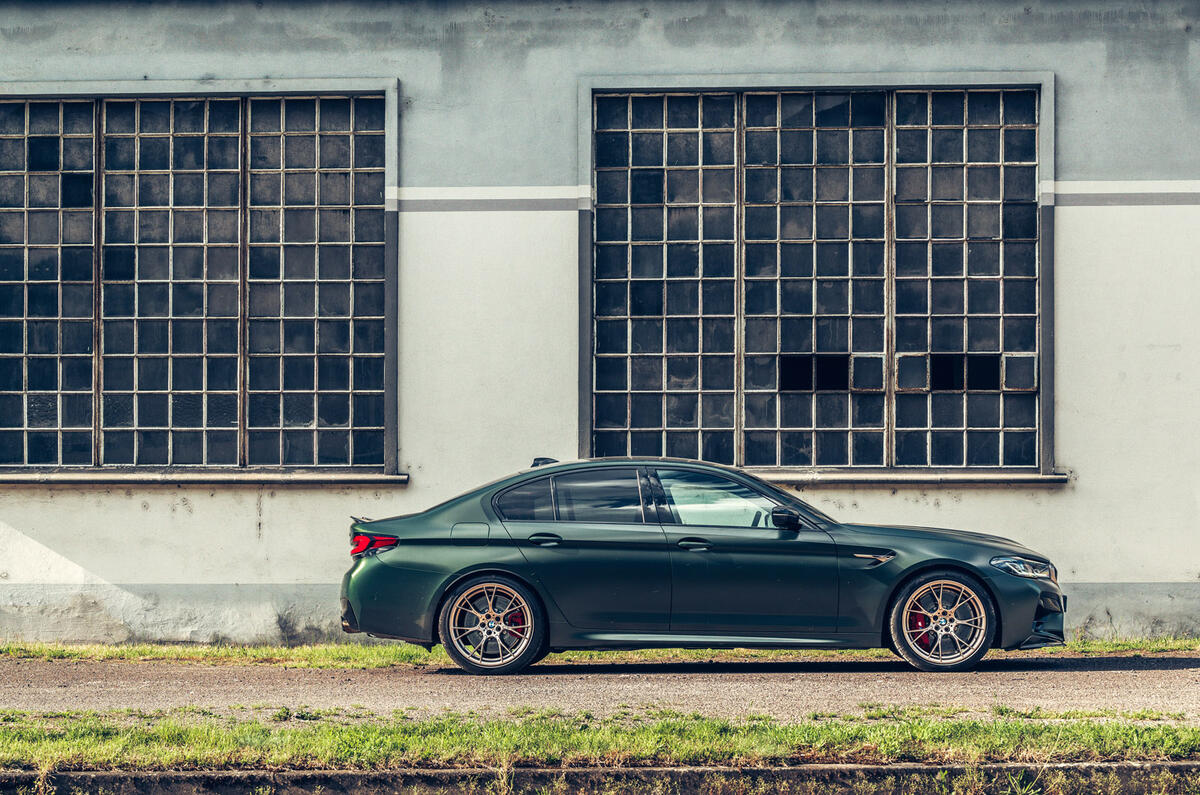
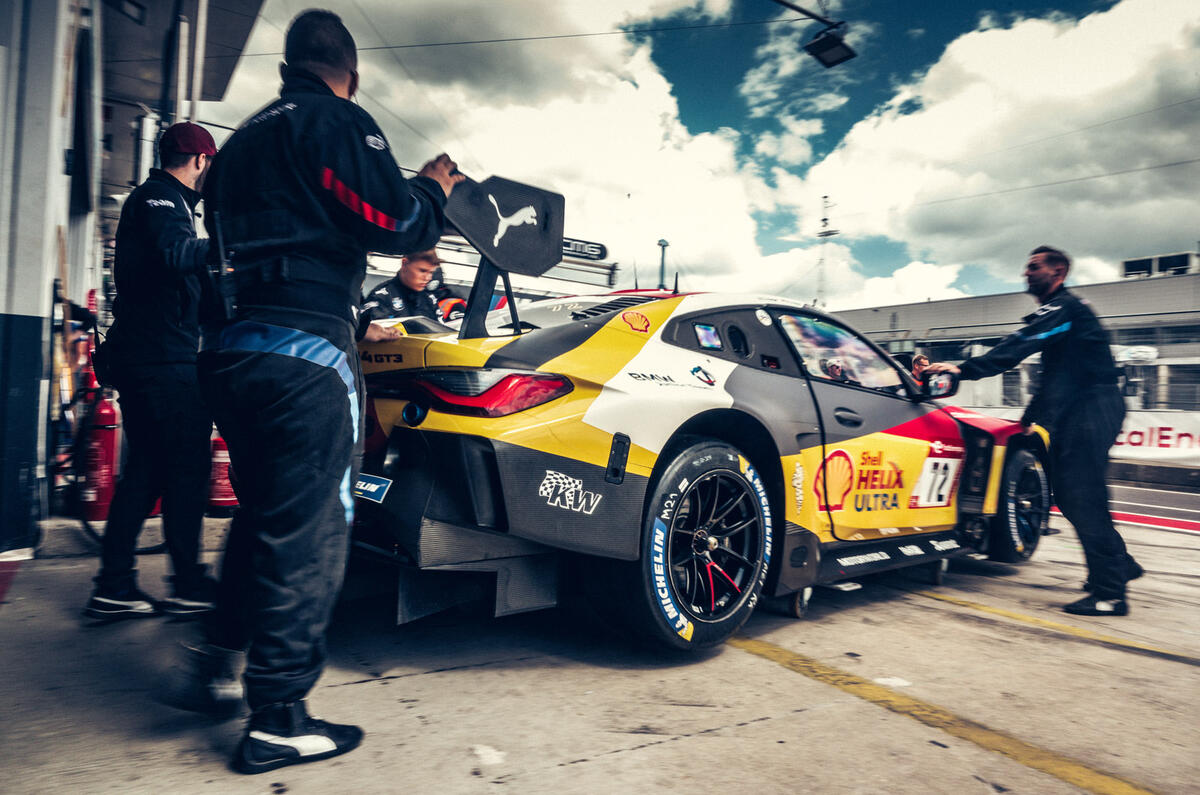
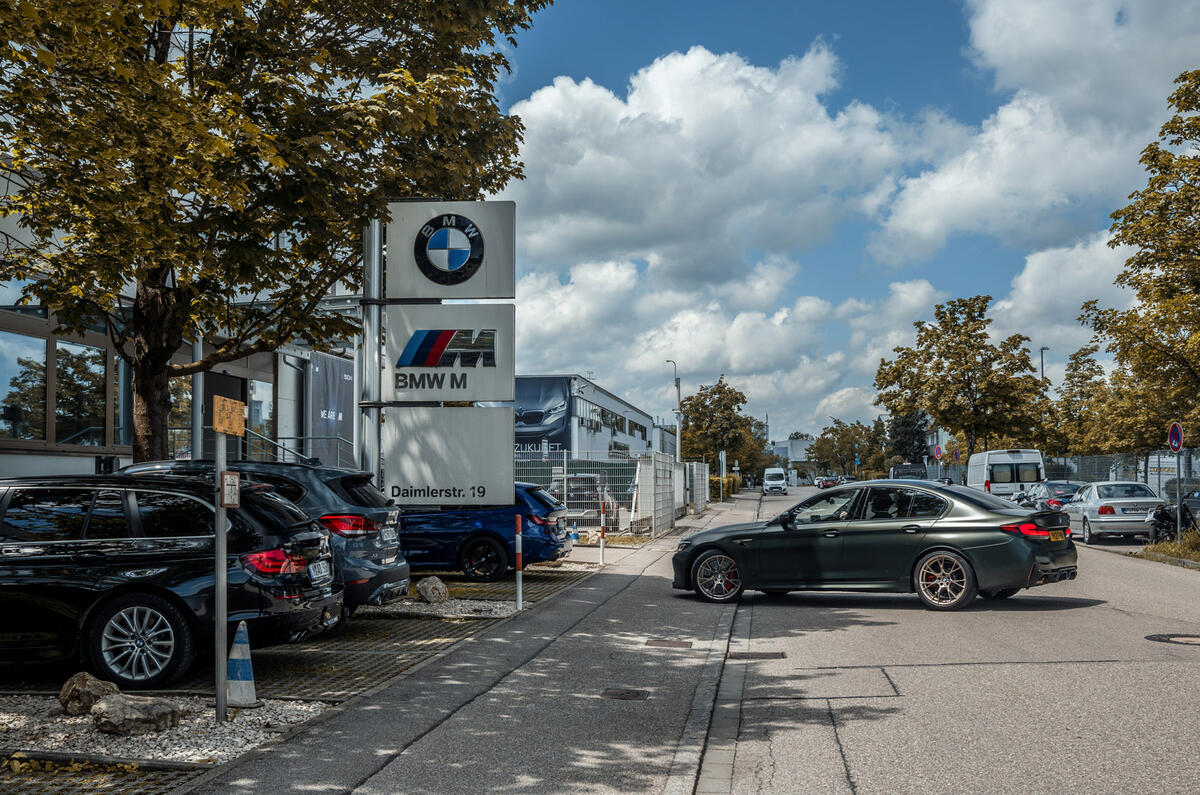
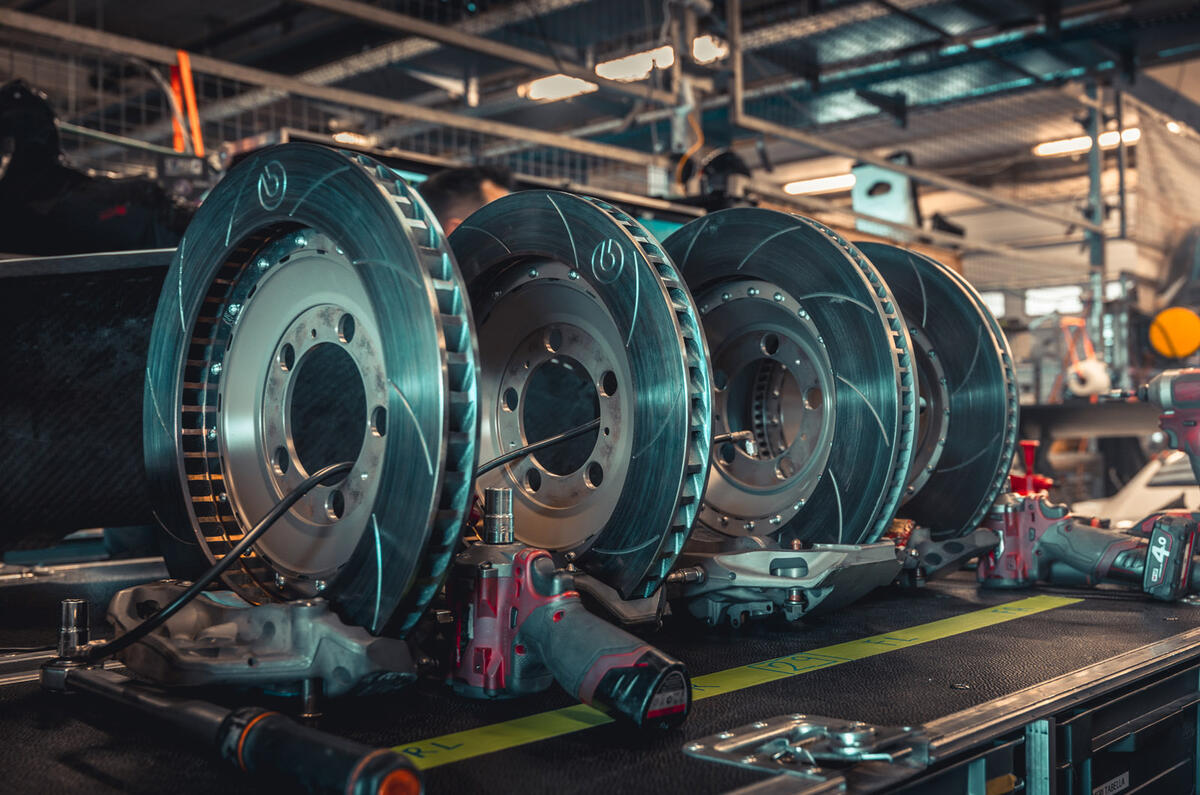
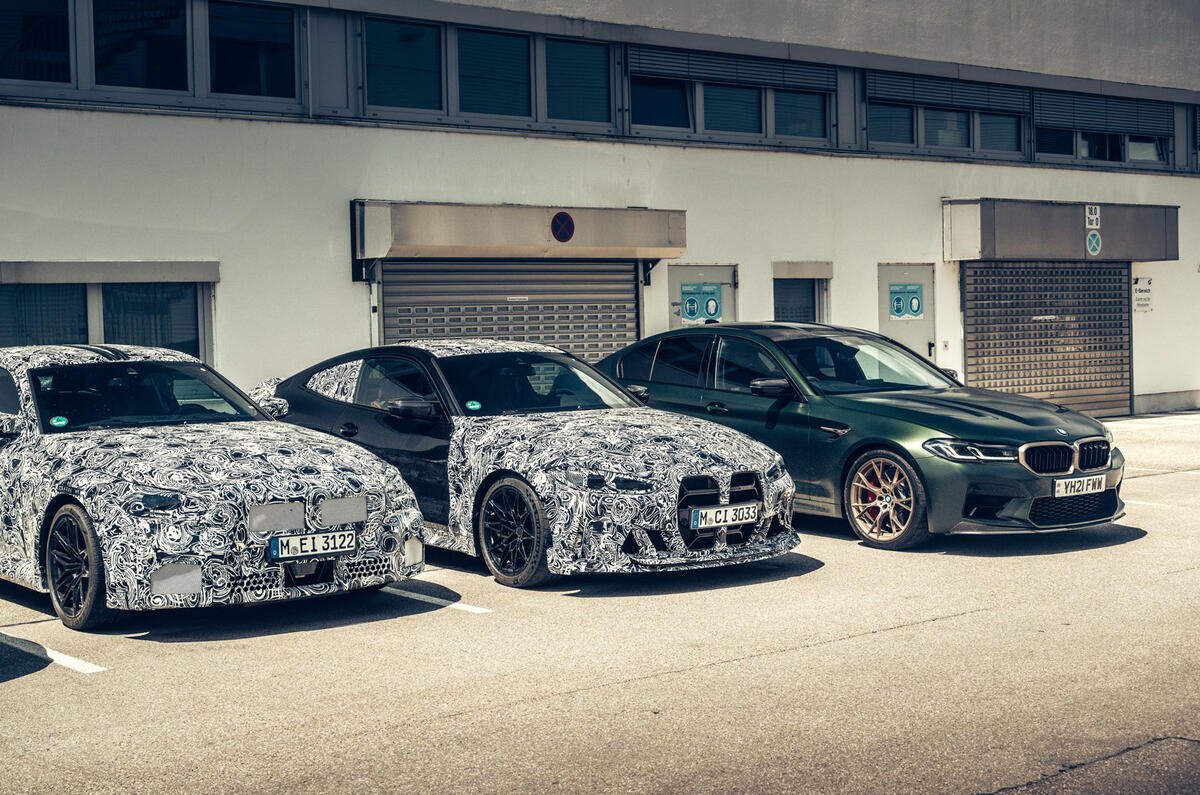
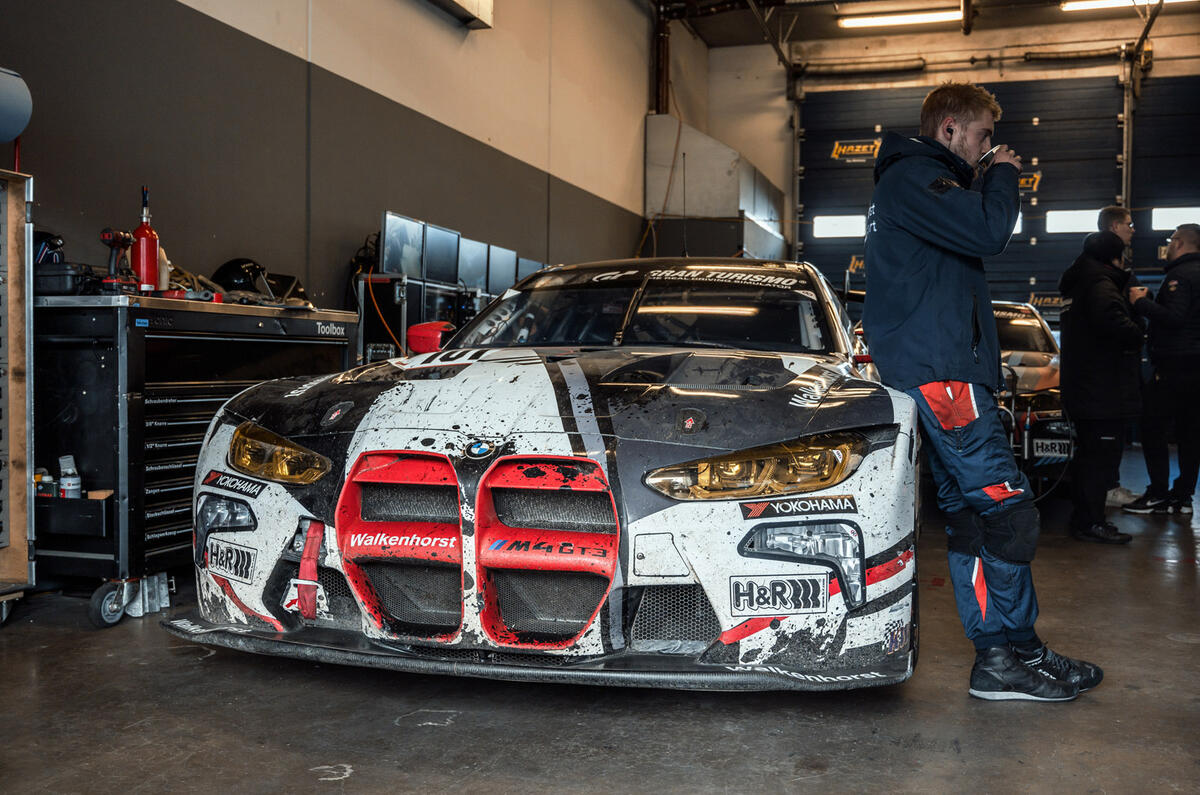
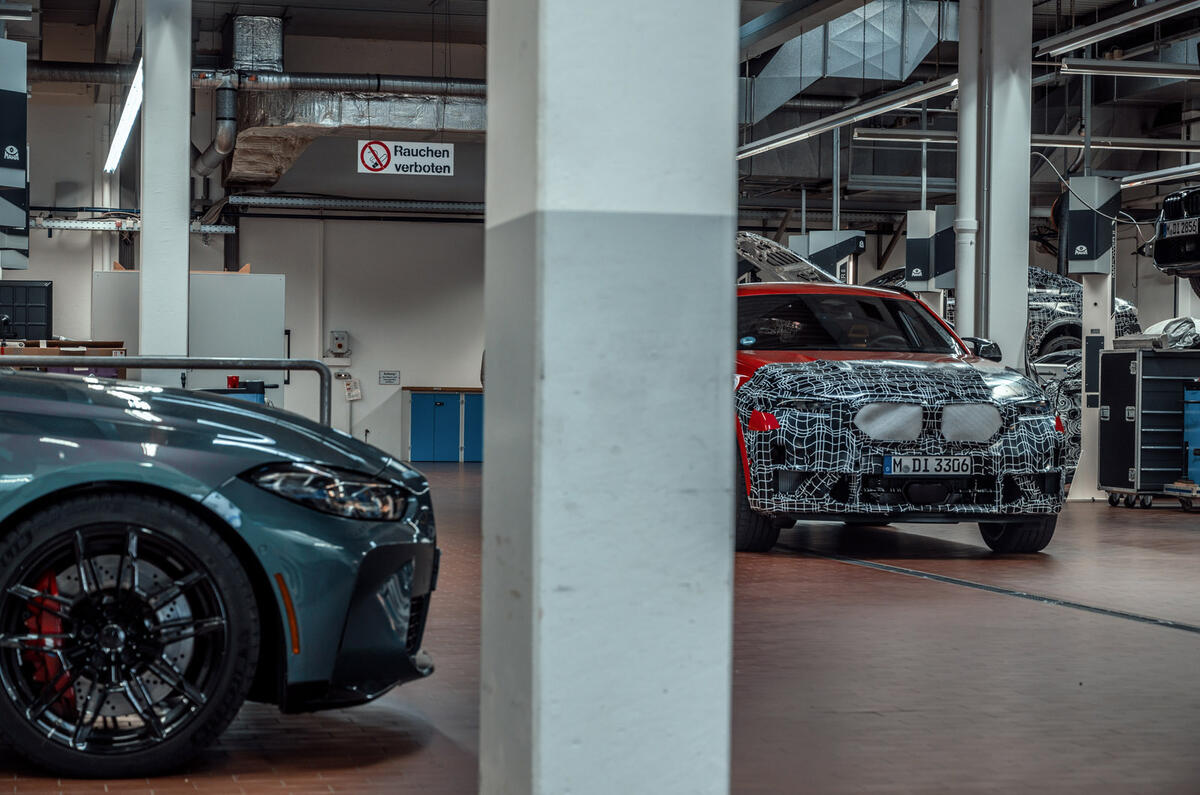
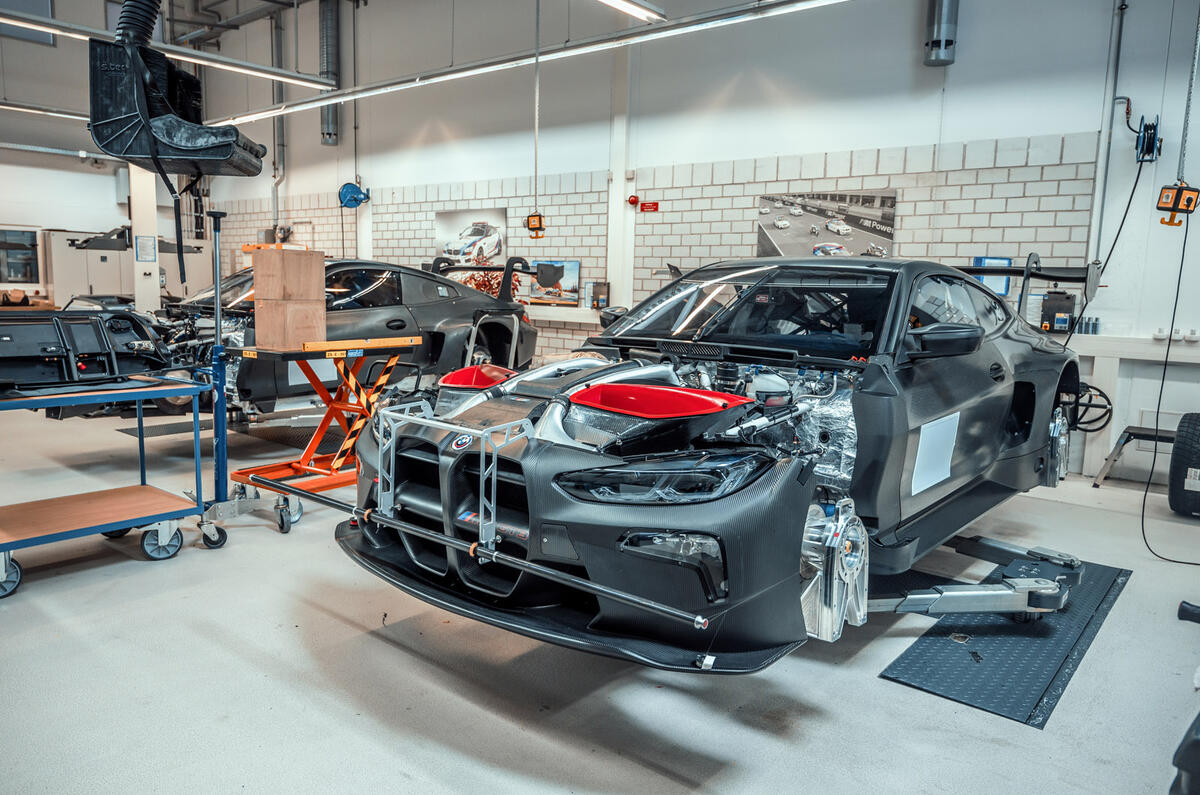
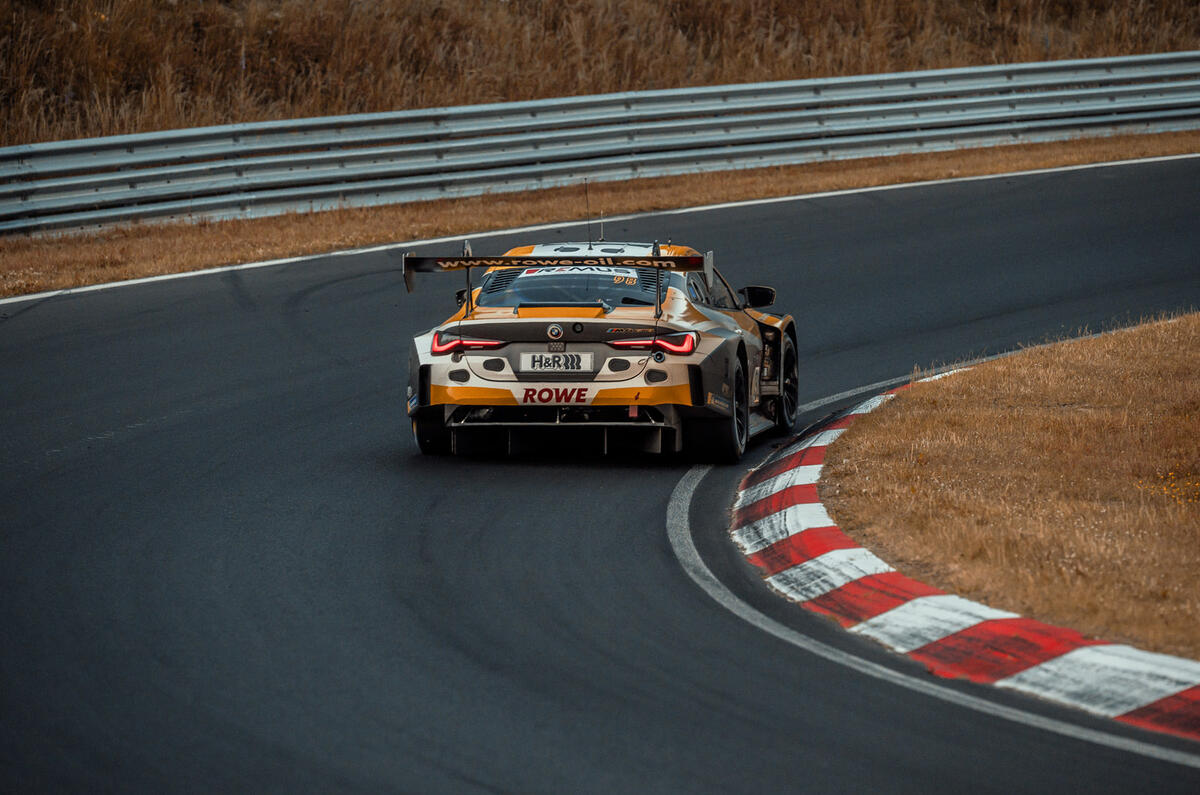
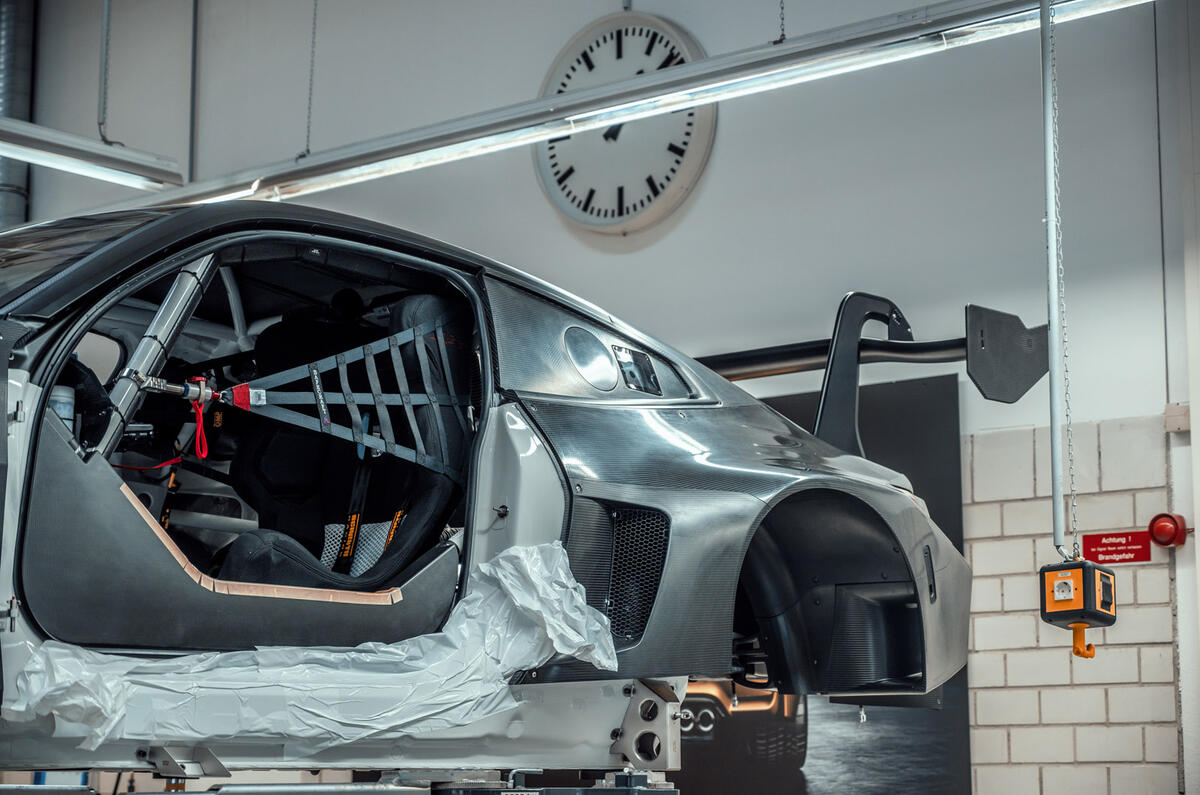
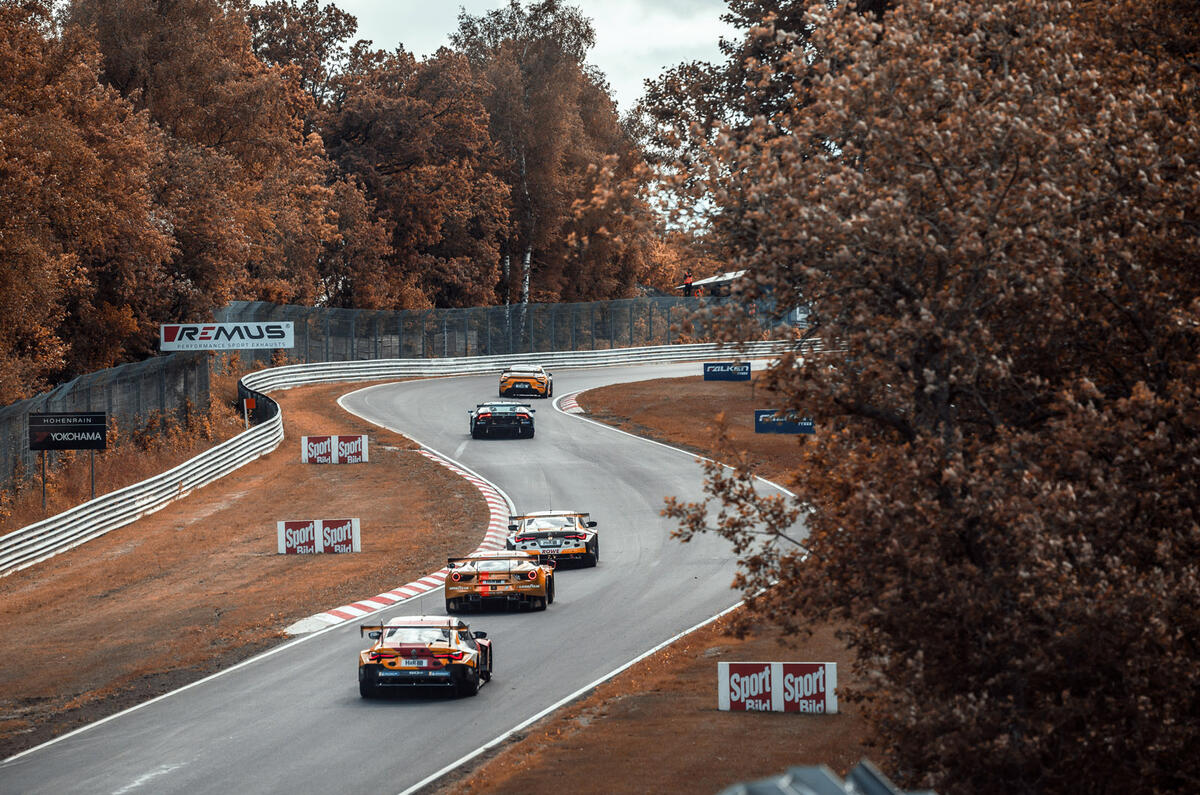

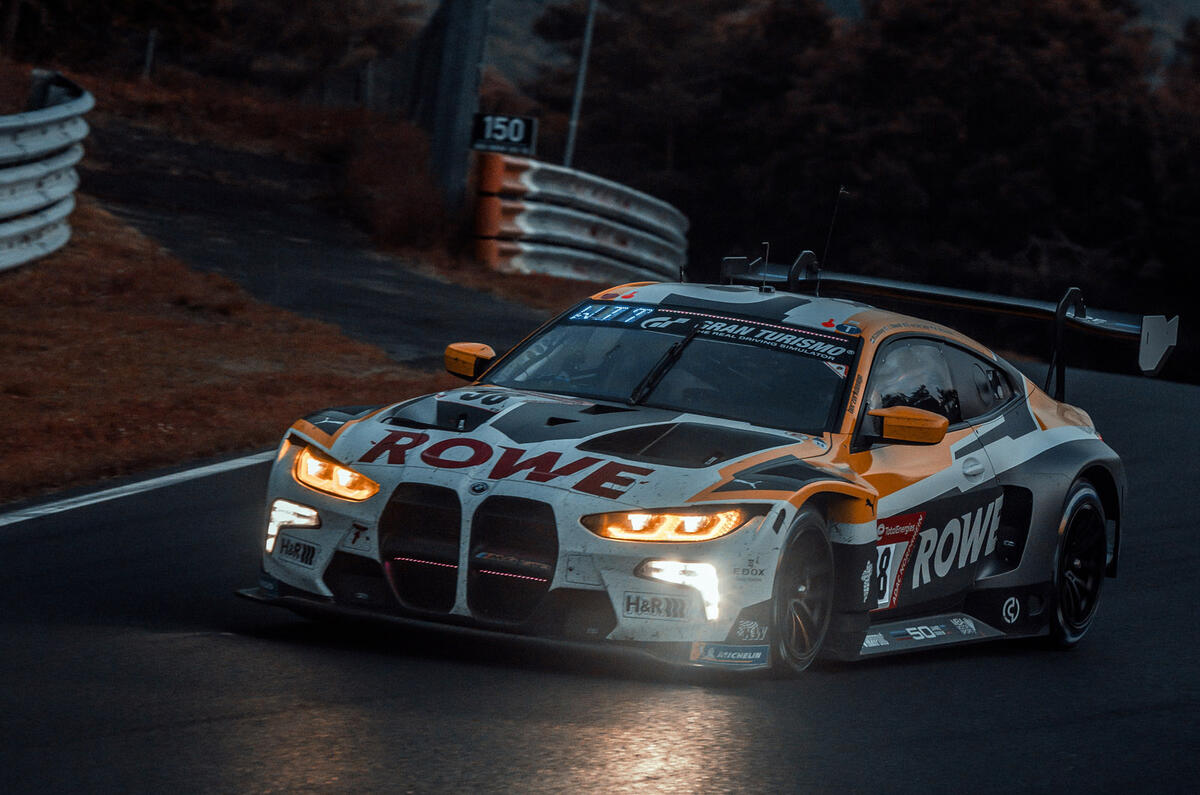
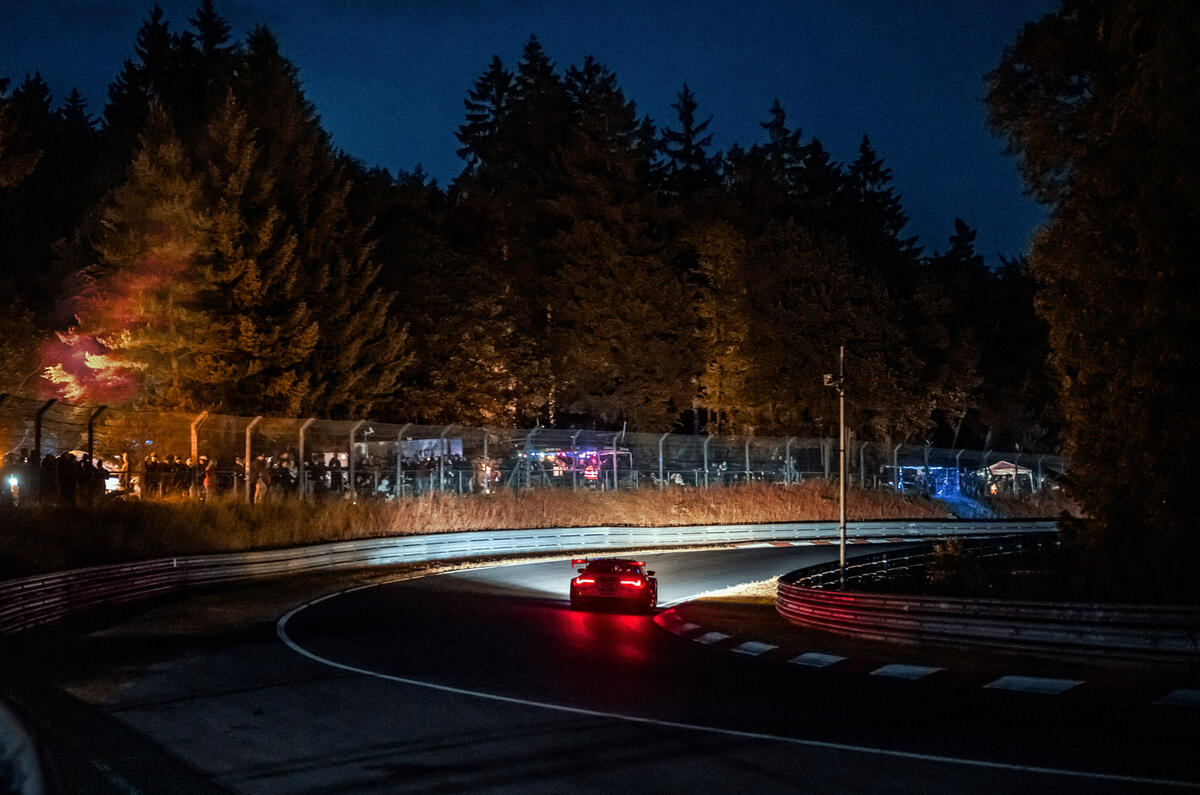
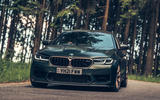
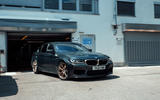
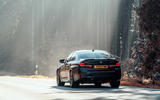
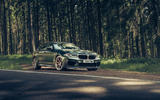
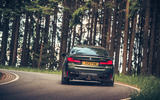
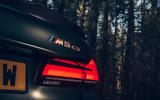
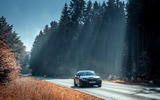
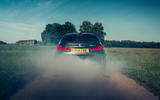

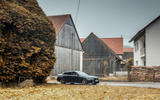
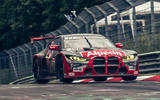
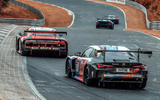
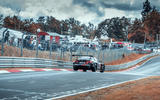
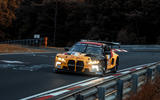

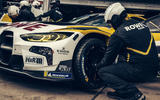
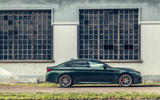


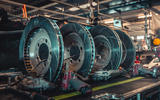

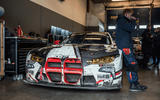
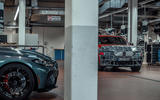
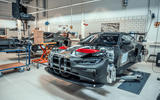
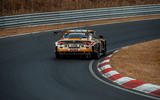


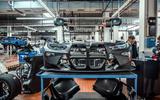
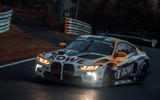
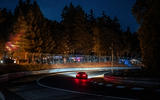






Join the debate
Add your comment